An electrician’s guide on how to fix a tripped fuse
Any kind of major electrical fault around the house will need to be repaired by a professional electrician. However, that said, there are a few everyday electrical tasks that aren’t complicated, or dangerous, which you could attempt yourself. The most important thing to remember is to switch off and unplug whatever it is you need to work on so there’s no danger of a live current.
The first thing to do is find your main fuse box (these days called a consumer unit), which will be in the same place as your electricity meter. They’re often in the main hallway of a house, in a purpose-built cupboard. This is where the electricity in your house is controlled from, and it’s important that you know where to go and what to do if you need to turn off the mains electricity. It’s also helpful to remember where you left a torch too!


In the case of loss of electric light or power
Your fuse box, or consumer unit, will either have fuses or trip switches. Modern electric circuits are fitted with a circuit breaker fuse system; if a fault develops, a switch is tripped and the circuit is broken. Older ones have fuse holders and when a fuse is blown it must be replaced or rewired.
If you experience problems with an old-fashioned fuse box, it might be sensible to install a replacement which conforms to current regulations for ease, safety and peace of mind. If you need assistance with any kind of electrical installation we would recommend calling out a qualified electrician .
Setting a trip switch Open the cover on the consumer unit to see which switches have tripped to the OFF position. Put them back to the ON position. If tripping occurs again, it is probably being caused by a faulty appliance. You need to identify which circuit is affected and which appliance on that circuit is causing the problem.
Which appliance is faulty?
Go around the house noting which set of lights or sockets are not working. Unplug all appliances on that problem circuit and switch off any immersion heaters (if you have one). Switch the tripped switch to the ON position and plug in the appliances one by one until the trip goes again. Leave that appliance unplugged, and have it repaired by a qualified electrician.
What causes it to trip or blow a fuse?
- An overloaded circuit
- Too many appliances being used at the same time
- A faulty or misused appliance
- Overfilled kettles
- Unclean toasters
- Cooker rings worn out or cracked
- Faulty immersion heaters
- Faulty connections on leads to appliances e.g. televisions or stereos etc.
- Light bulbs blowing
Most plugs will have a fuse inside them. If the appliance suddenly stops working, it is worth replacing the fuse inside the plug before calling an electrician.
To find out the correct type of fuse to fit in the plug, check the rating plate on the appliance. Do not overload plug sockets by using multiple plug adaptors.
Replacing the plug on an appliance is fairly straightforward, and is well worth doing before you declare your electrical appliance broken.
- Do not tamper with the electricity company’s fuse and seals
- Do not take any action unless you are confident you can do it safely and legally
Was this article helpful?
Think we could improve this article? Please let us know
Leave a Reply
Your email address will not be published. Required fields are marked *

Book a qualified electrician
Our electricians are on call for domestic and commercial work.
- Fixed-price quotes available
- Trade accredited experts
- Half-hour rates from £47.50 + VAT
- 5% off labour when you book online
More about our electrical services

Our electricians can be booked for a wide range of tasks. Read more about the range of services we provide here: –
- Electrical safety tests (EICR) ; all our electricians are qualified to inspect and test any type of electrical installations and issue the appropriate safety certificates
- Electrical repairs and fault finding ; we can usually schedule an electrician to visit the same day a booking is made and begin carrying out the electrical repairs you need straightaway
- Electrical installations and rewiring ; our NICEIC enrolment allows us to self-certify our electrical installation work so you can be sure it complies with UK Building Regulations
- PAT – Portable Appliance Testing ; regular testing is generally regarded as the best way of showing that maintenance and safety checks have been carried out correctly
- Emergency electricians on call ; our emergency response team is on call for large scale incident response as well as single property faults
Other articles you might like
The 10 most common roofing problems.
Without a regular inspection, your roof could suffer from a wide range of unseen and undiagnosed issues. In this article, we outline the ten most common faults that our experts find during roofing survey inspections... Common roofing problems
What is an F22 fault code on a Vaillant boiler?
Modern boilers display error codes when there's a fault. The F22 code is the most searched for online, which appears on Vaillant boilers. Learn what this code means and what you can do to resolve the problem... The code for low boiler pressure
10% off our hourly rates when you book online .
We use cookies to ensure you get the best experience on our website and for the purposes illustrated in our Cookie Policy
Okay, got it

Top Rated Electricians | 770-822-2150
Have an electrical problem? Call us, we can help!

Why Does My Plug Socket Keep Tripping
The outlets in your home are designed to prevent electrical ground faults by disconnecting electricity that flows through them. If your socket keeps tripping, it could be caused by several different issues. A GFCI outlet is usually installed in damp or wet areas of your home such as the bathrooms, kitchen, and outdoor areas where water is present. If they trip, it’s time to take a closer look to determine what is causing it, and how to fix it.
Common Causes of Sockets Tripping
An occasional trip is not out of the norm, but if it’s happening constantly, you should investigate the root cause. Sometimes, your plug socket could just be worn out due to age and heavy use. For most newer plug sockets, the lifespan ranges from around 15 to 25 years so if you have an older home with older materials, it may just be time for a replacement. In other cases, the socket could have been exposed to things like water, dust, or debris. If there is worn out insulation or the wires are starting to deteriorate, this can also cause the outlets to trip.
Hidden Problems
Not all plug sockets that trip present an obvious problem like damage or wear and tear. You may need to look more closely at your insulation to determine if it’s worn out, older, or damaged in some way. This insulation is designed to help prevent power leaks so if it’s in bad shape, it will create an issue. You could also simply have too many appliances or electronics plugged in, causing the outlet or socket to trip. You can perform a simple test by using a leakage current meter. This tool measures the amount of electricity that flows through your circuit to help you make a better diagnosis. You can also use a ground fault receptacle tester for GFCI outlets.
The good news is that most outlets are really simple to replace, and they’re fairly inexpensive. If you feel confident or have prior experience replacing electrical outlets, this may be your best bet to remedy the problem. However, if you’ve never dealt with electricity before and you’re unfamiliar with outlet replacement, you should always enlist the help of a licensed electrician. They can help you diagnose the real issue and then make the recommended repairs.
For all your electrical service needs or if you have an emergency, contact Electrical Pros at 770-882-2150 for prompt, friendly service.
Contact Us For Your Electrical Solutions
- Name * First Last
- How can we help you?
- Name This field is for validation purposes and should be left unchanged.
Find a local trusted trader
Search by trader name
What To Do If: Your Fuse Keeps Tripping
Electricity is one of the basic essentials in our homes, coming before almost anything else. If a fuse goes, it can be frustrating, but it helps to know what to do and when to call an electrician.
Causes of tripped or blown fuses
Finding out the cause of a tripped or blown fuse usually involves a process of elimination and a little patience. Most common causes are:
- Too many appliances plugged in
- A faulty appliance
- An appliance that is not maintained or is used inappropriately (e.g. overfilled kettle)
- Faulty immersion heaters
- Blown lightbulb
- Worn cooker rings.
If a fuse goes…
If a fuse goes, head straight to your fuse box, which is near your meter. Hopefully, you will know where it is and how to access it already. Your fuse box will have either fuses or trip switches. If a fuse “blows” then you will have to replace it in order to regain power. Trip switches are a more modern alternative to fuses. Rather than the fuse physically breaking, the switch is tripped and the power circuit goes from “on” to “off”.
Reset the trip switch
If a trip switch has gone, you should easily be able to see which one is the problem as the lever will be in the down position (usually showing “off” in red). Simply push the switch back up, to show “on” in green. If the switch flips down immediately, that is a sign that you have a faulty appliance plugged in somewhere. This is where the fun starts!
Finding a faulty appliance
It is most likely that only one circuit has tripped.
- Make a note of the appliances that aren’t working and unplug each one. If you have an immersion heater, switch it off.
- Once everything is unplugged, flip the trip switch to ON. It should stay on this time.
- Now go around the house and plug in each item that you have unplugged.
- Keep plugging appliances in until the fuse trips again; you have identified your culprit!
- Keep the faulty appliance unplugged (you can switch the trip back on now) and take it to a nearby electrical specialist for repair.
If the faulty item has a plug, it is worth changing the fuse in the plug before you take the appliance to be repaired. Replacing a fuse is not dissimilar to changing a battery. Unscrew the cover and look at the fuse in the plug already, or check the rating on the plug to find out what fuse you need. Once you know what fuse to use, it is a case of removing the old fuse, and popping a new one in.
While it is fine to attempt to do a range of home repairs yourself, when it comes to electrical faults, it is best left to the professionals. If you need to find an electrician, check out Trust A Trader’s directory of local trusted electricians . For more tips and advice, follow us on Facebook or Twitter .
Was this useful?
- Share on Facebook
- Share on Twitter

RCD Tripping
Are you having trouble with your electricity tripping in your home? Find out what could be causing your RCD to trip and how to fix it in this guide.
- Introduction to RCD Problems
In our guide to RCD tripping we will discuss potential causes behind repeated RCD trips and how to fix them. We will also break down how you can remove an RCD from a fuse box, how one can be replaced, how to prevent an RCD from tripping and the consequences of failing to fix an RCD which has this problem.
This article will be helpful if you are experiencing problems with your RCD or if you simply want to prevent RCD tripping from happening in the first place.
- What is an RCD?
- Faulty Appliance
- Low-Quality RCD
- Wrong RCD Current Rating
- Motors or Pump In An Appliance
- Older Washing Machines/Dryers
- Fridge/Freezers Cooling Down
- Moisture in Outside Electrical Boxes/Sockets
- Central Heating Issues
- Water in Wiring
- How to Fix a Faulty Appliance
- How to Fix a Low-Quality RCD
- How to Fix a Wrong RCD Current Rating
- How to Fix Any Appliances/Items That Use Motors or Pumps
- How to Fix Older Washing Machines/Dryers
- How to Fix Fridge/Freezers Which Is Cooling Down
- How to Fix Moisture in Outside Electrical Boxes/Sockets
- How to Fix Central Heating Issues
- How to Fix Water in Wiring
- How to Remove an RCD from Your Fuse Box
- How to Replace an RCD
- How to Prevent an RCD from Tripping?
- Electric Issues
- Electrocution
- Carelessness
- Electrician Cost
For this section we will examine what an RCD is. We will also discuss where it can be located and its purpose. A residual current device or RCD is a safety device designed to switch off the power if there is a fault, acting as a trip switch. RCDs go beyond the safety levels offered by regular fuses and circuit breakers.
An RCD is usually located in the fuse box (consumer unit). It might also be located between the circuit breaker and power sockets. The purpose of an RCD is primarily to reduce the risk of fire and electrocution. RCDs can be lifesaving.
If a person makes contact with something electric that is live, the RCD will turn off the circuit in a fraction of a second which reduces the threat of serious injury or death significantly.
Why Does my RCD keep tripping?
We will now look at possible reasons why your RCD keeps tripping. We will discuss common causes including faulty appliances, an incorrect RCD current rating and central heating issues.
One of the most common reasons for RCD tripping is a faulty appliance. The RCD will trip to remove a dangerous electrical circuit resulting from an appliance that is faulty.
This is of course one of the key jobs of an RCD. If these trips occur shortly after modification or maintenance in the home, then this may be related to a faulty appliance. This is more likely to occur when more items are plugged in than usual.
You should also look out for any appliances that appear to be acting up on their own accord. It could be that the fridge, shower or oven is tripping the RCD.
In some cases, a low-quality RCD may be the reason that it keeps tripping. In this case an RCD could be tripping when it’s not meant to. With a low-quality RCD it will either fail to reset or reset correctly before tripping just a couple of minutes later.
Every RCD has a particular current rating which if met or surpassed will cause it to trip. If an RCD has a current rating which is too low this could cause it to trip unnecessarily and repeatedly. A sign of an RCD with the wrong current rating is one that trips again and again.
If a motor or pump in an appliance causes a momentary spike in electrical activity, this surge could be enough to trip an RCD. Appliances with motors include fans, hair dryers and electric razors while washing machines are among those items with pumps.
If your RCD is only tripping on certain occasions, then this could be a sign that a specific appliance which has a motor or pump is causing it to trip.
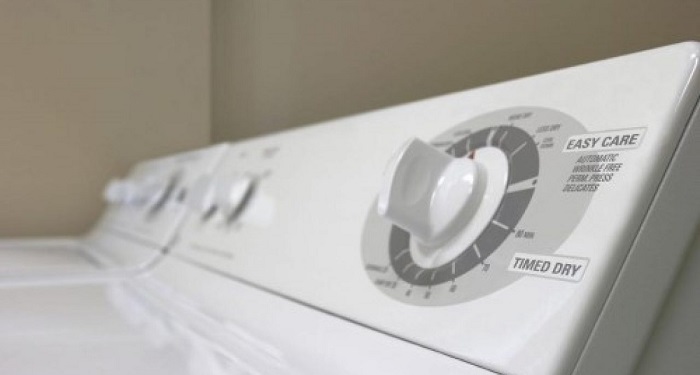
Electrical spikes can also be the result of old washing machines or dryers which can trip an RCD. Similarly, to appliances with motors or pumps, if it appears that your RCD trip times occur during the same parts of the day (when you are using these machines) then this is evidence that the washing machine is tripping the RCD or that the tumble dryer is.
A fridge or freezer cooling down can also lead to electrical spikes. Since these items usually remain plugged in, a repeatedly tripping RCD at any point of the day could be a sign that this is the cause.
If you notice that shortly after the motor inside your fridge or freezer begins to increase its work rate the RCD trips this may be another sign that a fridge or freezer cooling down is the cause.
If moisture is present in outside electrical boxes or sockets, this can cause an RCD trip. A sign that this may be the explanation is if the weather seals have decayed or/and your RCD keeps tripping randomly.
A faulty part in your central heating could also be the cause of an RCD trip. When a timer turns on the faulty part it could lead to an RCD trip. It may or may not cause RCD trips at particular times of the day. It may also result in RCD trips on a continual basis throughout the day.
It is not uncommon for water in wiring to cause RCD trips. Moisture can make its way into electrical wiring following a bath or shower or perhaps as a result of rain making its way into any wiring.
A sign that water in wiring is the cause include that there appears to be a correlation between recent water usage of some kind or/and rainfall and RCD trips.
How to Fix a Tripping RCD
For each cause of an RCD trip, there are distinctive solutions to consider. We will now break down ways you can fix a tripping RCD for each of the problems listed in the previous section.
To further examine whether a faulty appliance is causing your RCD to trip, unplug every electrical appliance in your home and check whether your RCD resets correctly. If it does, plug in each appliance one by one and reset your RCD as you plug in each item.
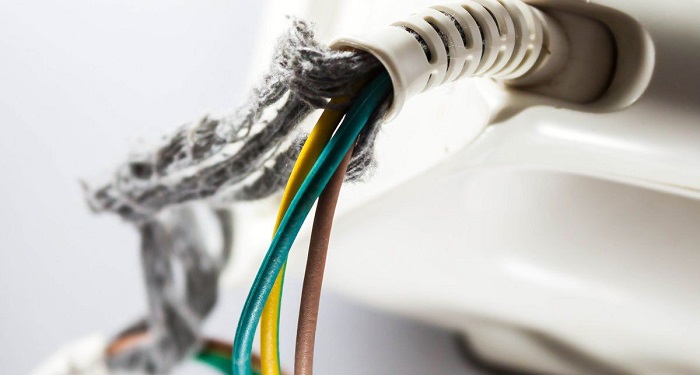
If suddenly the RCD starts tripping again shortly after plugging in one item in particular, then you’ve likely identified the specific cause. To solve this, you should hire a professional to fix or replace the appliance.
To fix a low-quality RCD, you should hire a professional. In most cases, you will need a new RCD installed. To avoid unnecessary costs, you should discuss this with the electrician before they arrive to inspect the RCD.
If your RCD has an incorrect rating, it may need to be replaced. Consult a professional to discuss the matter. You will likely need to hire them for a home visit so that they can inspect and repair or replace the RCD.
When it comes to appliances which utilise motors or pumps, you will probably need to hire an electrician to come out and fix the problem. They may recommend a repair or replacement. You could discuss this before they pay an initial visit.
An electrician could take a look at your washing machine or dryer if you believe that one of these are the cause. If your suspicions are correct, they may suggest having a specific part or parts repaired or even having the entire appliance replaced, depending on the severity of the issue.
If you believe that the motor which is working to cool down a fridge or freezer is the cause, it would be best to hire a professional to take a look.
They may recommend having the appliance replaced or rerouting the wiring connected to the fridge or freezer to prevent RCD trips. Of course, if the fridge or freezer is under warranty you could get a new one free of charge.
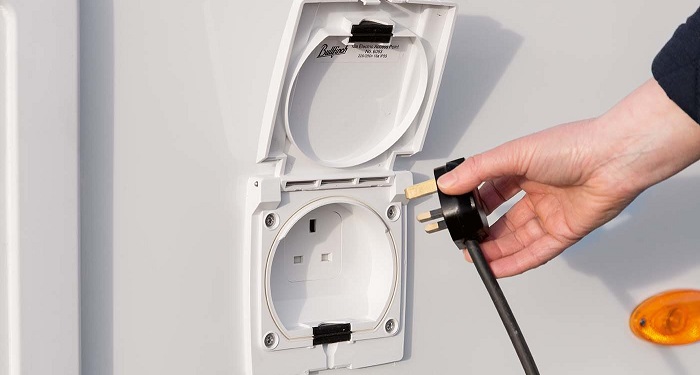
To fix issues caused by moisture present in outside electrical boxes or sockets, you should first turn off the power supply completely before drying the electrical boxes or sockets. If the weather seals have been destroyed beyond repair, you should have them replaced.
If central heating issues appear to explain what the RCD tripping causes are, you should have a professional come out and take a look and beforehand discuss possible repairs and replacements. The electrician on inspecting your central heating may find a specific problem and offer a solution such as a repair or replacement of a given part.
Increasing ventilation or heating in your home can help to prevent moisture from affecting your household’s wiring. By combining a heater with a device such as a hygrostat (humidistat) or hygrotherm you can control air flow and moisture more effectively in your home.
Hygrostats respond to humidity levels in a given enclosed space. It is connected to the heater and helps to manage humidity. Hygrotherms work as both a humidity and temperature controller.
If the problem persists, you may need to hire an electrician and you should consider consulting a professional either way as you might want to ensure that there are no immediate safety concerns.
In this section we will explain how you can remove an RCD from an RCD fuse box. In some cases, an RCD may be present elsewhere but in the majority of cases it will be found in the fuse box. Lift up the flap on your fuse box. The RCD switch may be labelled as ‘RCD’.
Alternatively, there could be a ‘T’ or the word ‘Test’ directly above it. Before removing the RCD, ensure that all power is turned off. Employ a screwdriver to remove both screws which attach the RCD to the fuse box.
Look for a small tab which contains a slot on the back of the RCD. A flat blade screwdriver can then be used to place inside the slot. Next, pull down the slot while you pull the RCD in your direction to remove it.
This can be done DIY if the aforementioned guidance is applicable however some RCDs and fuse boxes may be different. While hiring an electrician may not be necessary, if in doubt, you should consult a professional.
We will now discuss how you can replace an RCD and look at topics such as whether this can be done DIY and the costs involved if you were to hire an electrician. As discussed above, an RCD may be labelled as it’s named or marked with a ‘T’ or the word ‘Test’ above it.
To replace an RCD, you will first need to remove it using the steps discussed in the previous section. Once the RCD is removed, another can be put in place by completing the removal steps in reverse.
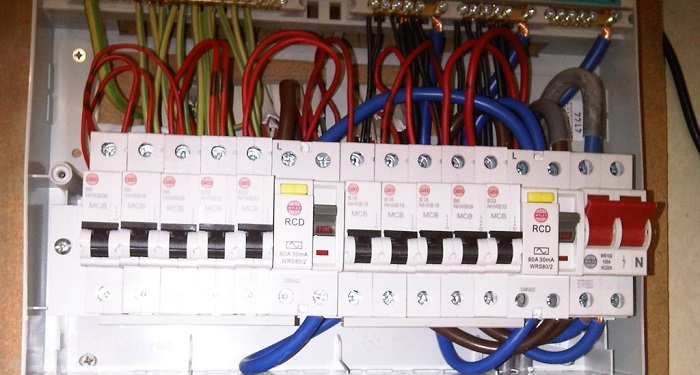
However, a new RCD will also need to undergo various tests. While replacing an RCD can be done DIY, unless you are well-studied and highly competent in the area, you should hire an electrician.
This is because there are multiple aspects to correctly replacing an RCD. It will likely cost between £30 and £70 to replace an RCD including both installation and supply costs. An RCD itself will likely cost between £10 and £40 .
For this section we will look at ways to prevent repeated RCD trips. We will look at measures that can be taken to ensure it doesn’t happen again. To avoid RCD tripping, you should make sure that you have a good quality RCD to begin with.
If not, you might consider replacing it with a better RCD. Taking care of your appliances can help prevent a faulty appliance resulting in RCD trips. You should also check that your RCD has the correct current rating.
By installing devices to control humidity levels as well as having good ventilation and fans in your home, you can reduce the risk of water making its way into the wiring. Also check that there is no moisture present in outside electrical boxes and sockets.
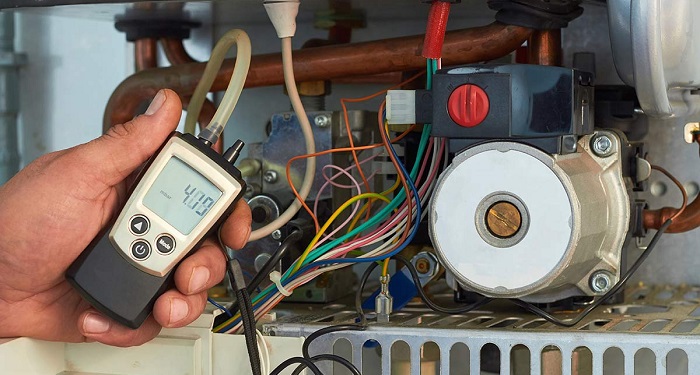
Turn off the power before inspecting them and dry them if necessary. Also ensure that the outdoor weather seals are in good shape but replace them if needs be. These approaches can also be taken as measures to prevent repeated RCD tripping happening again if it has occurred before.
Annual maintenance of your boiler by a professional is a good measure you can take to prevent this problem from repeating. Another beneficial measure is to deal with any electrical or appliance faults as soon as they arise.
What Can Happen if I Don’t Fix my RCD?
Failure to fix an RCD that repeatedly trips can lead to many hazards such as the risk of fire and electrocution. An RCD which is continually tripping may already be faulty or low-quality to begin with but either way repeated tripping can cause the RCD to deteriorate over time.
An RCD is a safety feature and if it is not working properly, fire is one of the hazard risks involved. If it is constantly tripping, its ability to function may end up damaged.
RCDs are designed to trip out when there is a sudden surge in electrical activity so a faulty or broken RCD will increase the risk of a fire breaking out in a household.
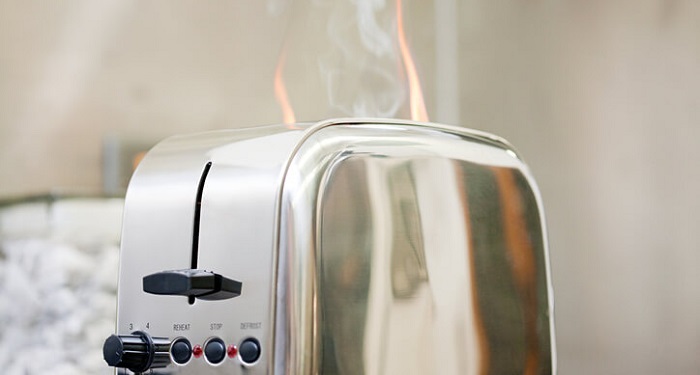
If an RCD is not able to trip and knock off the power when it should be such as from repeated tripping resulting in it becoming damaged, electric issues may emerge with time which can as a result act as a hazard by raising the risk of fire or electrocution.
It may also increase the risk of wear, tear and possible damage to the electrics as a whole.
As with fire, electrocution is a hazard which you risk if an RCD isn’t working properly or continues to trip.
If your RCD trips often, you may not realise when the RCD is tripping in relation to a genuine safety concern with your home’s electrics or appliances.
This can increase the risk of carelessness and make it more likely for the signs of a faulty appliance or an issue with your electrics to go unnoticed.
We will now break down the estimated costs associated with an electrician including RCD installation costs. Electrician rates can vary significantly for different regions of the UK.
Q: How does an RCD work?
A: An RCD works by measuring your home’s electric current flow and on noticing a fault or surge in electrical activity it will shut off the power.
Q: Where can I buy an RCD?
A: You can buy an RCD through a retailer like Screwfix or TLC. You will also find RCDs for sale on online stores such as eBay.
Q: How long does an RCD last?
A: An RCD will probably have 10 years or more before becoming faulty.
Q: Is an RCD mandatory?
A: You may be required under Part P of building regulations to have an RCD installed although this should only apply to new or rewired homes. There are many cases for new or rewired homes where you will need an RCD.
Q: Do I need a new RCD?
A: Generally, if your RCD is damaged or faulty, it will need to be replaced.
- https://www.electricalsafetyfirst.org.uk/guidance/safety-around-the-home/rcds-explained/
- https://www.alliedelectrical.co.uk/trip-testing-rcd-home
- https://www2.theiet.org/forums/forum/messageview.cfm?catid=205&threadid=13110
- http://www.judgeelectrical.co.uk/rcd/investigate-tripping-rcd.html
- http://www.marcspages.co.uk/pq/3342.htm
- https://www.hunker.com/13408650/kinds-of-machines-that-make-use-of-electric-motors
- https://www.appliancespareswarehouse.co.uk/washing-machines/washing-machine-pumps
- https://blog.se.com/power-management-metering-monitoring-power-quality/2013/10/29/electrical-enclosures-warm-dry-keeps-condensation-away/
- https://www.devonia-electrical.co.uk/help-centre/do-i-need-an-rcd/

I have a Bachelor's Degree in Creative Digital Media, I'm a freelance writer and I've worked for clients such as the British Blockchain Association and I have experience in writing articles, YouTube video scripts, online guides and newsletters. I have written and produced many short films as well as a web series and feature film. I am also currently working on a novel.

Home Security Cost

Electric Gates Cost

Cost to Rewire a House
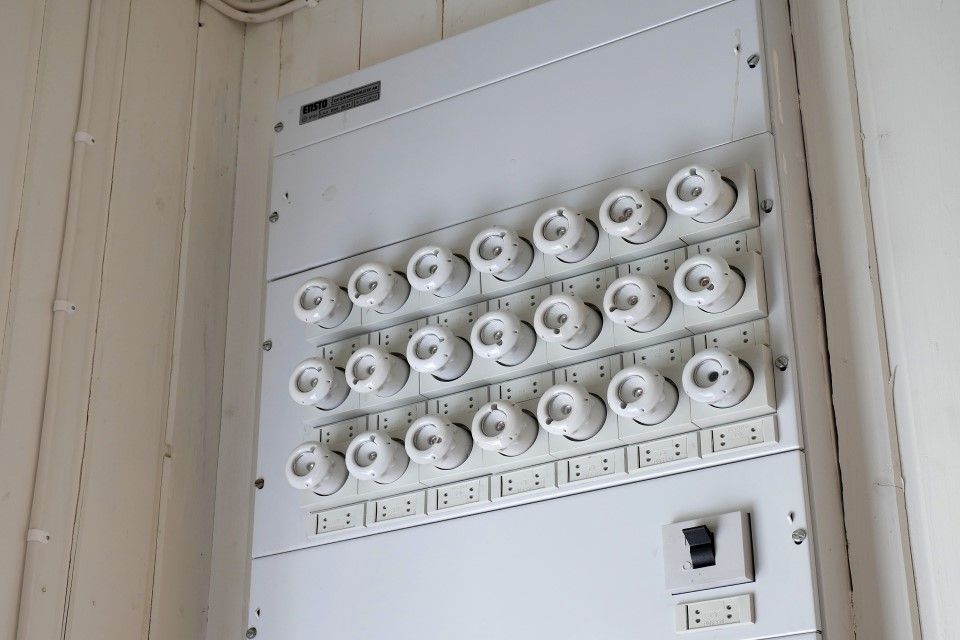
Cost to Replace Consumer Unit

Cost of CCTV Installation
See more related articles .
All rights reserved © 2024 Homehow
Privacy Disclaimer About Contact
I agree with the MyJobQuote.co.uk terms & conditions and MyJobQuote.co.uk privacy policy .

More results...
- Gas & Heating
- Handyman Service
- Appliance Repairs
- Loft Conversion
- Waste Removal London
- Join Our Standby List
- Pre-Book & Pay Less
- Special Offers
- Ask a Tradesperson
- New Supplier
- Complaints Procedure
- Get Our Software
- Case Studies
- For Business
- Get an Instant Quote
- Book On Demand
- Call 0208 059 8111
- Electrical Advice
How to Fix a Tripped Fuse: A Step-by-Step Electrician’s Guide
- March 22, 2024
- Blog , Electrical Advice

- What We Discuss Here
- - What Is The Difference Between a Fuse And a Breaker?
- - What Causes a Tripped Circuit Breaker?
- - What Causes a Fuse To Trip or Blow?
- - What If My Fuse Box Keeps Tripping?
- - How To Fix an Electrical Issue At Home?
- - Signs of a Tripped Fuse
- - How To Fix a Tripped Fuse?
- - Expert Tips to Prevent Future Trips and Blown Fuses
- - How Do I Know If I've Overloaded a Circuit?
- - Safety Measures
- - When to Call a Professional Electrician
At some point, all London homeowners and landlords will likely encounter the frustrating power cut-off of a tripped fuse. For many, the first instinct might be to call an electrician immediately.
But what if there was a simple fix you could perform safely and swiftly?
This guide will explain to you how to identify and reset a tripped fuse. By the end, you'll be equipped to handle this common electrical issue on your own, saving you time and money while enhancing home safety.
Well, Before we jump into the nitty-gritty, it's important to understand the difference between a fuse and a breaker in the first place.
What Is The Difference Between a Fuse And a Breaker?

13 Amp, 3 Amp and 5 Amp fuses in the UK

NXB-125 Moulded Case Circuit Breaker
The main difference is that fuses can't be used again, but breakers can be used many times. Breakers shield homes and devices from overloading and short-circuiting, while fuses only protect against overloading.
Both fuses and breakers stop the electricity flow, but they work differently. A fuse melts metal when it gets too hot, while a breaker switches off when there's too much electricity.
What Causes a Tripped Circuit Breaker?
The main reason a circuit breaker trips is when there's too much electricity (power surge), overloading the circuit because of too many lights, devices, or appliances using the same circuit.

The main breaker is on the right side, and the other breaker is on the left side.
What Causes a Fuse To Trip or Blow?

Fuses can trip or blow if you're using more electricity than the circuit can handle. This happens when you plug in too many devices or appliances at once, putting a strain on the electrical system.

Running too many appliances at the same time can overwhelm the circuit, causing the fuse to trip. This often occurs when multiple high-power devices operate simultaneously, drawing more electricity than the circuit can safely handle.

A defective or misused appliance can also lead to a blown fuse. If an appliance has a short circuit or a malfunctioning component, it can cause a surge of electricity that exceeds the capacity of the fuse, resulting in a trip.

Overfilling kettles or having dirty toasters can create electrical problems. When water or crumbs touch electrical parts, they lead to a short circuit, resulting in a blown fuse.

Worn-out or cracked cooker rings can cause electrical faults that trip the fuse. Over time, the heating elements in cookers can deteriorate, leading to increased resistance and potential overheating.

Faulty immersion heaters can also trip fuses. If the heating element becomes damaged or the thermostat malfunctions, the circuit can overload, causing the fuse to blow.

Faulty connections on appliance leads, such as those for TVs or stereos, can result in electrical issues. Loose or damaged connections can create resistance in the circuit, leading to overheating and fuse failure.

If light bulbs frequently blow out, it could indicate an underlying electrical problem. This could be due to issues such as voltage fluctuations, poor wiring, or incompatible bulbs, all of which can cause fuses to trip or blow.
Book a Serviceteam Electrician Today!
What If My Fuse Box Keeps Tripping?
Uh-oh! Lights out? Sockets dead? Fuse box acting up again? We understand your frustration! It's common for breakers to trip or fuses to blow occasionally, but if this happens frequently, there might be a larger problem at hand.
Fuses play a crucial role in electrical circuits, ensuring our safety. When a fuse trips, it's a warning sign that something might be wrong with an appliance or wiring in your home.

If you've followed the steps above and still can't figure out why your fuse keeps tripping or if it happens repeatedly, the problem might lie with the fuse box itself.
The fuse starts to break the circuit when the current is too high, preventing electrical damage and fires.
You can usually pinpoint the problem by elimination. If the problem persists, don't hesitate to contact Serviceteam Professional Electricians in London for a reliable service.
How To Fix an Electrical Issue At Home?
Here are some steps to help you troubleshoot electrical issues at home:
Look for any faulty or damaged items that may be causing problems. If you find any, unplug or replace them.
Look for signs of burning, discolouration, or unusual smells. Check for frayed or exposed wires. If you notice any issues, it's best to call a licensed and experienced electrician to assess and repair them.

Rodents like rats, mice, and chipmunks are known for chewing through electrical wires, which can lead to dangerous situations. If you suspect pests are present in your home, contact an exterminator to address the issue.

Make sure the breaker of the correct size is being used for each circuit. Ensure that all breakers are secure, and there are no sparks or signs of burning.
Here are some signs to look out for:
- The main breaker trips, but the individual breakers seem fine.
- The breaker won't reset properly.
- You notice a burning smell coming from the electrical box.
- The circuit breaker keeps tripping frequently.
- There are signs of damage to a breaker, such as scorch marks.
If you spot any issues, contact a licensed electrician for repairs. Remember not to attempt any electrical work unless you're completely confident in your abilities.
Always prioritise safety when dealing with electrical issues. If you're unsure or don't have the right tools, it's best to hire a professional electrician who can safely handle the situation.
Signs of a Tripped Fuse

How can you tell if you're dealing with a tripped fuse ? Look for a power shut-off in one area of your home, frequently accompanied by a loss of lighting.
In some cases, the fuse box might show a red indicator or the switch corresponding to the affected area will be in an 'off' position.
[The Step-by-Step Guide]
How To Fix a Tripped Fuse?

There is no need to panic when you discover a fuse box switch is tripped; just follow these simple steps.
Before attempting to reset the fuse, the first and most critical step is to switch off all appliances and lights connected to the circuit that you suspect is tripped. This helps prevent further overload and reduces the risk of electrical hazards.
Once everything is powered down, find your electrical panel. In most London homes, this is a grey metal box found in a hallway, basement, or other utility area. Knowing where your panel is located before an emergency is crucial so you can access it easily.
The first step in fixing a tripped fuse is identifying the problem. When a fuse trips, it's typically due to an overload or short circuit in the electrical system. Start by locating your fuse box, usually found in the basement, garage, or utility room. Open the fuse box, and you'll see a series of on-off switches known as circuit breakers. Each switch controls the electricity to a different part of your home and is labelled accordingly. Scan these switches until you find one that's in the 'off' position, or if you have an older fuse box, you may notice a fuse with a visible break or burn mark.
Now you have switched off all appliances. To reset the fuse, simply flip the switch back to the "on" position. If you have a fuse system, replace it with another one with the same amperage rating.
After resetting the fuse, test the circuit by gradually turning on appliances and lights one by one to ensure the system can handle the load. If the fuse trips again immediately, it could indicate a more serious underlying issue, and you may need to seek professional help from a qualified electrician.
If the fuse remains intact after testing the circuit, you've successfully resolved the issue! However, to prevent future incidents, it's essential to address the cause of the tripped fuse. Common causes include overloaded circuits, faulty appliances, or wiring issues. Consider redistributing appliances across different circuits or having defective appliances repaired or replaced.
These simple steps allow London homeowners to quickly and safely restore power.
Expert Tips to Prevent Future Trips and Blown Fuses
- Check your appliances and devices to see if any are faulty or damaged.

👉 If you're looking for reliable electrical services, such as Portable Appliance Testing (PAT) , EICR or any other electrical need, in London, give serviceteam's professional electricians a call. Make sure to get your PAT testing done on time. It checks all the portable devices in a building or at a construction site that are connected to the main electrical supply. This includes appliances like refrigerators, electric cookers, kettles, toasters, TVs, drills, hair dryers, and anything else that you plug into a socket! Ensure your home's electrical safety for peace of mind.
- Make sure you're not overloading any circuits with too many devices plugged in.
- Unplug or replace any appliances or devices that could be causing the problem.
For Long-Term Prevention:
- Regularly inspect your electrical panel for signs of damage.
- Avoid overloading outlets with multiple devices.
- Unplug devices when they're not in use.
- Replace worn or damaged electrical cords.
- Use surge protectors to safeguard your appliances and devices from power surges.
- Avoid doing electrical work yourself if you're not trained or experienced.
How Do I Know If I've Overloaded a Circuit?
Circuits can safely handle a specific amount of electricity. Using too many devices at once can draw more electricity than the circuit can handle. This causes the fuse to trip.

If you've been using multiple appliances in one room, you've probably overloaded the circuit. Extension cords are often the culprit. Even though they have multiple sockets, it's not safe to use all of them simultaneously. Try unplugging some devices and then switch the tripped fuse back to the "on" position.
Safety Measures
When dealing with electricity, safety has to be the top priority. Therefore, make sure you wear appropriate safety gear such as gloves and, if possible, non-conductive footwear.
When to Call a Professional Electrician

If the circuit trips again immediately after being reset or the breaker switch keeps turning off without apparent cause, it's time to bring in a professional. Some problems may be too complex or dangerous for an amateur to handle, so if in doubt, seek expert help from a qualified electrician.
Remember these simple steps, and the next time your home encounters a tripped fuse, approach the situation calmly and confidently.
Our professional electricians are just a call away, ready to step in and ensure your home's electrical systems are in top-notch condition.
Related Posts

Worcester Greenstar 8000 Life 35kW Review

S Plan Vs Y Plan Central Heating System: Which One Is Better?

How to Fix A21 Fault on Worcester Boiler?

Ideal Logic Boiler Review

How to Fix Vaillant F62 Fault Code?
07464 786086
020 3488 6941

Does Your RCD Keep Tripping? Here’s How To Fix It…
Are you fed up of times when your RCD keeps tripping for no apparent reason and shutting the electricity off in your house? Perhaps you’ve noticed that even though you’ve replaced the faulty component, it’s still tripping again and again. Why does this happen and what should you do about it?
This article will explore the different reasons why your RCD could trip, how you can prevent it from happening in the first place, and finally what actions you could take when the RCD trips.

What Is An RCD?
Residual current device (RCD) is a safety device designed to switch off the power if there is a fault, acting as a trip switch. RCDs go beyond the safety levels offered by regular fuses and circuit breakers. An RCD is usually located in the fuse box (consumer unit). It might also be located between the circuit breaker and power sockets.
An RCD usually goes on the supply side of the equipment it protects, often inside a fuse box or on a distribution board. Some equipment may also have an RCD built into the plug. There are different types of RCDs that can serve various requirements.
RCDs generally work by monitoring the current flow in a lower voltage circuit. If they detect an issue with the current flow they shut off the power to the entire system, which prevents electrocution or severe injuries.
It makes sure that electricity will not flow to your home or business in the event of a fault, such as a short circuit. In simple terms, the RCD acts as a failsafe device and can be a lifesaver.
RCD within a fusebox Why Does The RCD Keep Tripping?
There are many reasons why your RCD can keep tripping, and in this section, we will explore some of the more common causes for it. It is important that you pay close attention to this section especially prior to electrical rewiring as this will help address most of the issues at the forefront.
Faulty Appliance
A faulty appliance is one of the main causes why RCD keeps tripping. Technically, RCDs are designed to protect against electrical circuit faults from faulty appliances. If an RCD trips, it has done its job and removed the faulty electrical circuit from the power network which could potentially cause a fire. In most cases, this will be caused by appliances that have been poorly installed or maintained.
Incorrect RCD Current Rating Used
Each Residual Current Device is designed to trip when the current flowing through it exceeds a certain value. If the RCD’s rated value is too low, it will trip unnecessarily. You may find that your RCD is tripping repeatedly. This could indicate that it has the wrong rated current and should be replaced with one of the correct rating.
All RCDs should trip when the current exceeds its rating. A sign of an under-rated RCD is one that trips repeatedly, particularly on small overloads.
Low-Quality RCD
A low-quality RCD is a common cause of premature tripping. A true RCD will reset itself within a few minutes. It should never trip while it is resetting. Good quality RCDs should be able to withstand the current that passes through them during a reset continuously for at least an hour without overheating.
Accurate tripping is a great feature of RCD’s. It means that they are working correctly and if anything gets in the way such as a fault or a blockage it can trip quickly and easily. A low quality RCD will not be able to detect correctly and trips over time.
Fridge/Freezers Cooling Down
When your fridge or freezer begins to cool down, the motor inside it increases its work rate. This can cause power spikes, even when plugged into an RCD protected power point.
An RCD can react if there is a sudden rise in electrical current use or leakage current, due to the contents of your refrigerator or freezer thawing out.
Occasionally, a poorly connected appliance can cause a spike in electricity supply. If this happens, the RCD will trip and reset as it is designed to do. Electricity supply should return to normal shortly afterwards.
Moisture In Electrical Sockets
Moisture in outside electrical boxes and sockets can cause a trip by the RCD. It is vital that you detect moisture in your socket box early on. Exterior electrical terminal boxes and outlets should be periodically checked for moisture; signs of moisture may include weather-sealed cases that have deteriorated and/or reset switches that trip randomly.
Use Of Older Washing Machines/Dryers Or Motors/Pumps
Spikes can also be the result of poorly maintained or incorrectly connected equipment such as older electrical appliances, such as washing machines and dryers, which can cause the power to surge. With motors and pumps, if there is a correlation between the frequency/time of surges and use of an appliance, then it is most likely that that appliance was causing the RCD trip.
This trips when there is a sudden spike of electricity that can cause injury or damage. These spikes can be caused by lightning strikes, electrical faults, power tools, appliances with motors or pumps, old washing machines and dryers and so on.
Issues With Central Heating Systems
A faulty component in your central heating could cause RCD trips. An RCD trip is often triggered when the faulty part turns on and off repeatedly, which may lead to false alarms. Permanent damage could be caused to electrical equipment if your home suffers frequent or prolonged RCD trips due to a faulty component.
Water In Wiring
Maintaining a high standard of electrical safety is crucial. When the resistance of a piece of wiring exceeds a certain level electricity will travel via a shortcut. If this path happens to include water or dampness, your RCD will trip to protect you from the risk of electrocution, which is probably why the RCD keeps tripping.
In many cases, residents and vacationers alike fail to properly care for their recreational vehicles and water intrusion can occur. Due to this, there is a possibility of RCD trips.
Fixing A Tripping RCD
Having looked at the various causes on why RCD keeps tripping, let’s expand further on each of them to understand how we could fix a RCD that keeps tripping.
How To Fix Faulty Appliance From Tripping
If you suspect that a faulty appliance may be causing your RCD to trip, try unplugging every electrical appliance in your home and checking whether your RCD resets correctly. If it does, plug in each appliance one by one and reset your RCD as you plug in each item.
If suddenly the RCD starts tripping again shortly after plugging in one item in particular, then you’ve likely identified the specific cause.
How To Fix Incorrect RCD Rating Used
If your circuit breaker is rated beyond the requirements of the home’s electrical system, it may need to be replaced. Professional electricians can visit homes for visual inspection to determine whether or not the RCD needs to be replaced.
How To Fix Low-Quality RCD
It is best for a trained electrician to replace low quality RCD. In most cases, this kind of professional installation is necessary. It can even be dangerous to replace the RCD yourself – this is why you should hire a reputable contractor to replace it.
How To Fix Fridge/Freezers From Tripping
It might be possible that the motor cooling the fridge or freezer is broken. A professional may recommend having it replaced or rerouting the wires connected to the appliance to prevent tripping. If the motor is tripping, it would be best to call a professional. You can get it replaced or reroute the wiring to prevent RCD trips.
Fixing The RCD Trips Caused By Moisture In Electrical Sockets
The moisture present outside electrical boxes or sockets can be risky when it comes to the safety of the property. When you encounter an electrical problem due to moisture present in outside electrical boxes or sockets, it is important to first turn off the power supply completely before drying the electrical boxes or sockets. If the weather seals have been destroyed beyond repair, it is recommended that you have them replaced.
Fixing Trips From Older Washers And Motors
A licensed electrician can take a look at your washer or dryer if you believe that one of these devices is the cause. If you are right, they may suggest having a particular part repaired or replaced, depending on the severity of the issue.
Fixing RCD Trips Caused By Central Heating Issues
If you have a RCD tripping due to central heating problems, call an electrician to assess your home’s wiring. The RCD will trip if the correct electrical current cannot be delivered to the part being used. Depending on the scale of the problem, you might need to replace old wiring or have an electrician do it for you.
Alternatively, you can get in touch with a professional electrician who will be able to give suggestions as to how you can avoid similar issues in the future, such as repairing now and replacing in the future.
How To Fix RCD Trips Caused By Water In Wiring
The right heating and ventilating systems are vital to ensuring that moisture is not present in your home’s wiring. In other words, improperly ventilated or heated homes can cause water to damage electrical wiring. Heating and ventilation systems can be combined with humidity control devices, such as a hygrostat (humidistat) or a hygrotherm, to regulate the moisture levels in a home.
How To Remove An RCD From Your Fusebox
In order to remove the RCD from the fuse box, you must first ensure that all electrical load has been disconnected from the RCD. Once all loads have been disconnected, you will notice a small tab on the front of the RCD. Take a flat bladed screwdriver and insert it into the slot on the back of the RCD. Next, firmly pull down on the slot as you pull the RCD away from the fuse box.
In most cases, the RCD is located in the fuse box. The RCD switch may be labelled “RCD.” Alternatively, you may locate a “T” or “Test” above it. Make sure the power to the circuit is switched off before taking out the screws that attach the RCD to the fuse box.
Replacing An RCD In A Fusebox
To replace an RCD, you will first need to remove it using the steps described above. Once the RCD is removed, another can be put in place by completing the removal steps in reverse. However, a new RCD will also need to undergo various tests. While replacing an RCD can be done DIY, unless you are well-studied and highly competent in the area, you should hire an electrician. This is because there are multiple aspects to correctly replacing an RCD.
The cost of replacing an RCD can range between between £30 and £70 including both installation and supply costs. An RCD itself will likely cost between £10 and £40.
How To Prevent An RCD From Tripping?
To prevent RCD trips, you should conduct regular appliance maintenance on your RCD, keeping it free from dust and damage. Checking that appliances are rated for the correct mains voltage can help determine if the appliance is faulty.
It’s also worth checking that your equipment has a current rating that is appropriate for the amount of power being drawn from it.
To reduce the risk of an RCD tripping due to electric moisture, ensure that electrical wiring is adequately ventilated, ensuring that there is no moisture present in sockets or electrical boxes. The power must be turned off before inspecting sockets/boxes. Installing a device to control humidity levels, ventilation fans and good sockets will keep you safe at home.
Consequences Of Not Fixing An RCD
If your RCD keeps tripping, it’s important that you pay close attention to it as it can otherwise lead to many hazards such as the risk of fire and electrocution. An RCD which is continually tripping may already be faulty or low-quality to begin with but either way repeated tripping can cause the RCD to deteriorate over time.
Depending on the model, RCDs may be used to protect against electrical fires. A faulty or broken RCD can make a home more vulnerable to fire and lead to unnecessary and dangerous conditions.
Electrical Malfunctions
If an RCD is unable to trip, it may become damaged over time, leading to electrical issues. Damaged circuits can be a fire hazard, increasing the risk of electrocution, damage to the appliances and wear and tear on the wiring.
You could be putting yourself and your family at risk if you have an electric issue, but don’t realise. A non-functioning or faulty appliance is not always obvious, which means you could become accident-prone with no RCD protection in place.
Final Thoughts
From the above discussion, it can be understood that it’s important that you continuously watch if the RCD is in a good condition. Additionally, you would need to ensure that they are well maintained so you can prevent any hazardous and harmful risks such as fire and electrocution. You would also need to ensure that your property follows the local regulations.
If all of this seems overwhelming to you, you can always contact your local electrician to help fix any issues with an RCD that keeps tripping. Is An RCD?
An RCD usually goes on the supply side of the equipment it protects, often inside a fuse box or on a distribution board. Some equipment may also have an RCD built into the plug. There are different types of RCDs that can serve various requirements.
It makes sure that electricity will not flow to your home or business in the event of a fault, such as a short circuit. In simple terms, the RCD acts as a fail safe device and can be a lifesaver.
RCD keeps tripping
RCD within a fusebox
Why Does The RCD Keep Tripping?
There are many reasons why your RCD can keep tripping, and in this section, we will explore some of the more common causes for it. It is important that you pay close attention to this section especially prior to electrical rewiring as this will help address most of the issues at the forefront.
Alternatively, you can get in touch with our east London electricians in Chingford who will be able to give suggestions as to how you can avoid similar issues in the future, such as repairing now and replacing in the future.
The cost of replacing an RCD can range between between £30 and £70 including both installation and supply costs. An RCD itself will likely cost between £40 and £60.
If all of this seems overwhelming to you, you can always contact our local electricians in east London to help fix any issues with an RCD that keeps tripping.
< Older Post
Newer Post >
07464 786086
Make a booking today and check when we are next available.

Do you have electrical faults in your bathroom?
Help with electrical problems in your living room.
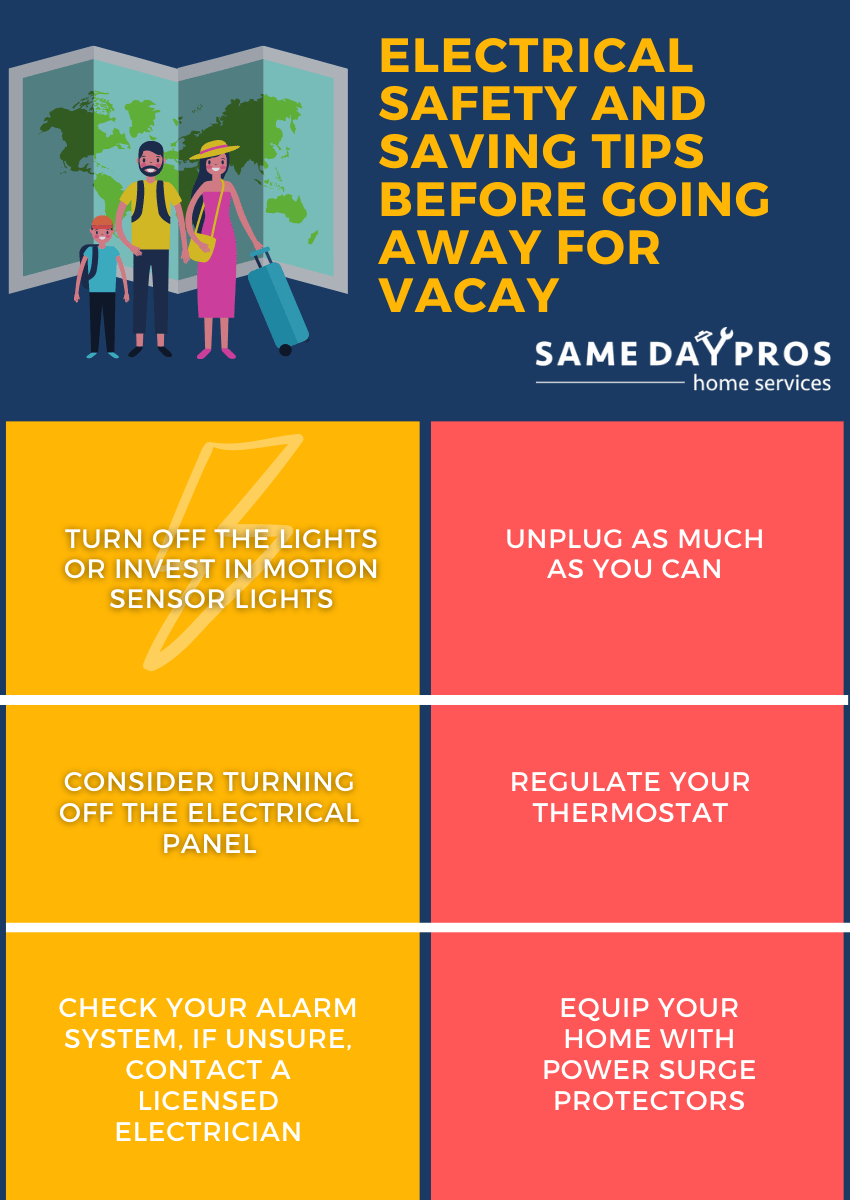
What to switch off when you go on holiday
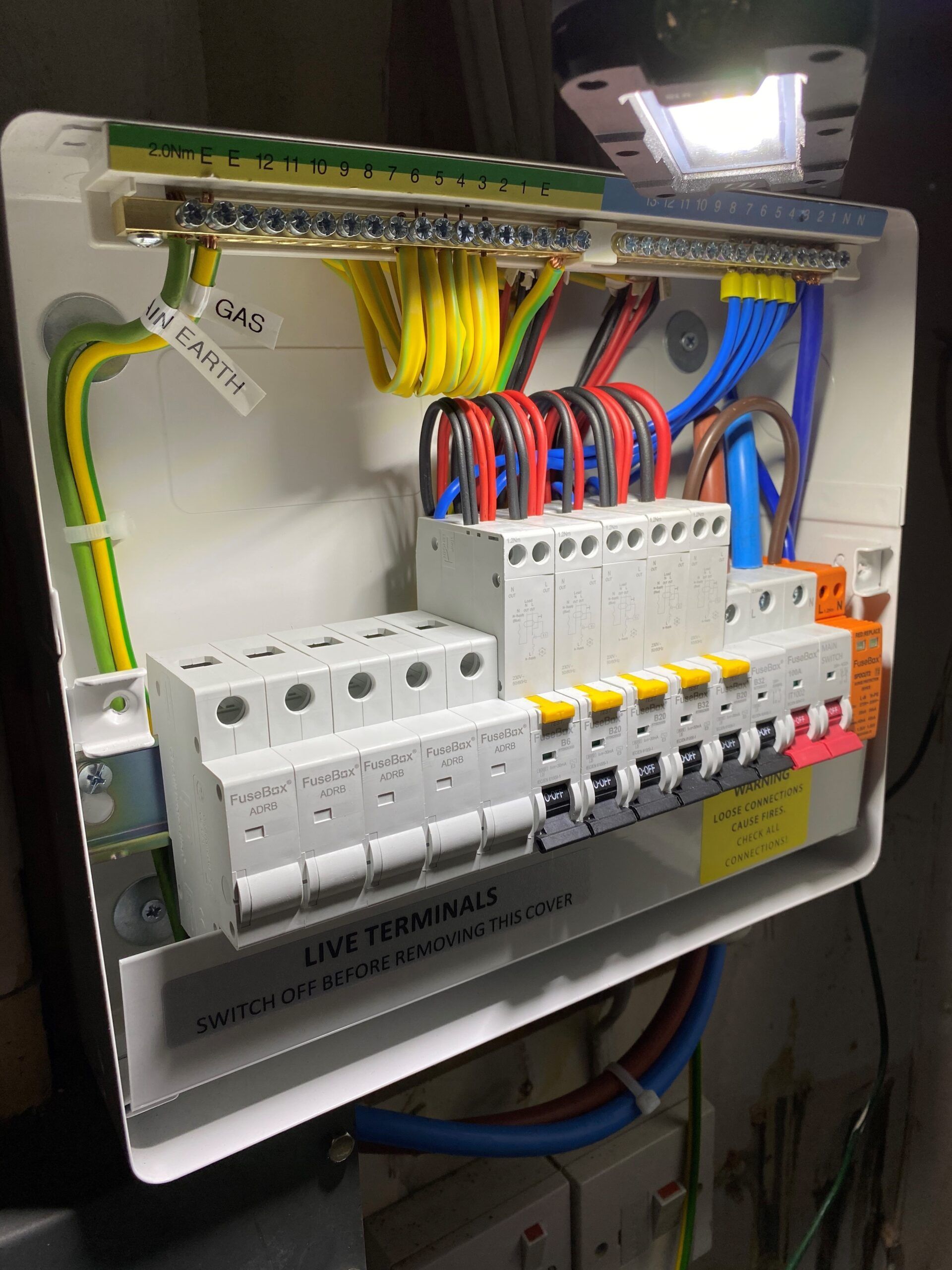
Fusebox Safety

LED - Three letters, one amazing outcome
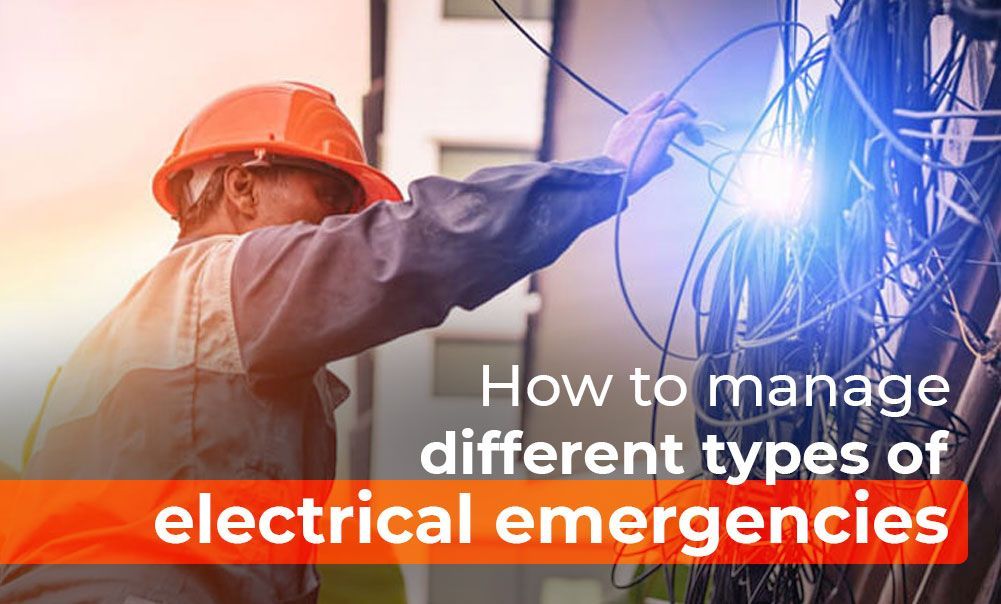
Types of electrical emergencies
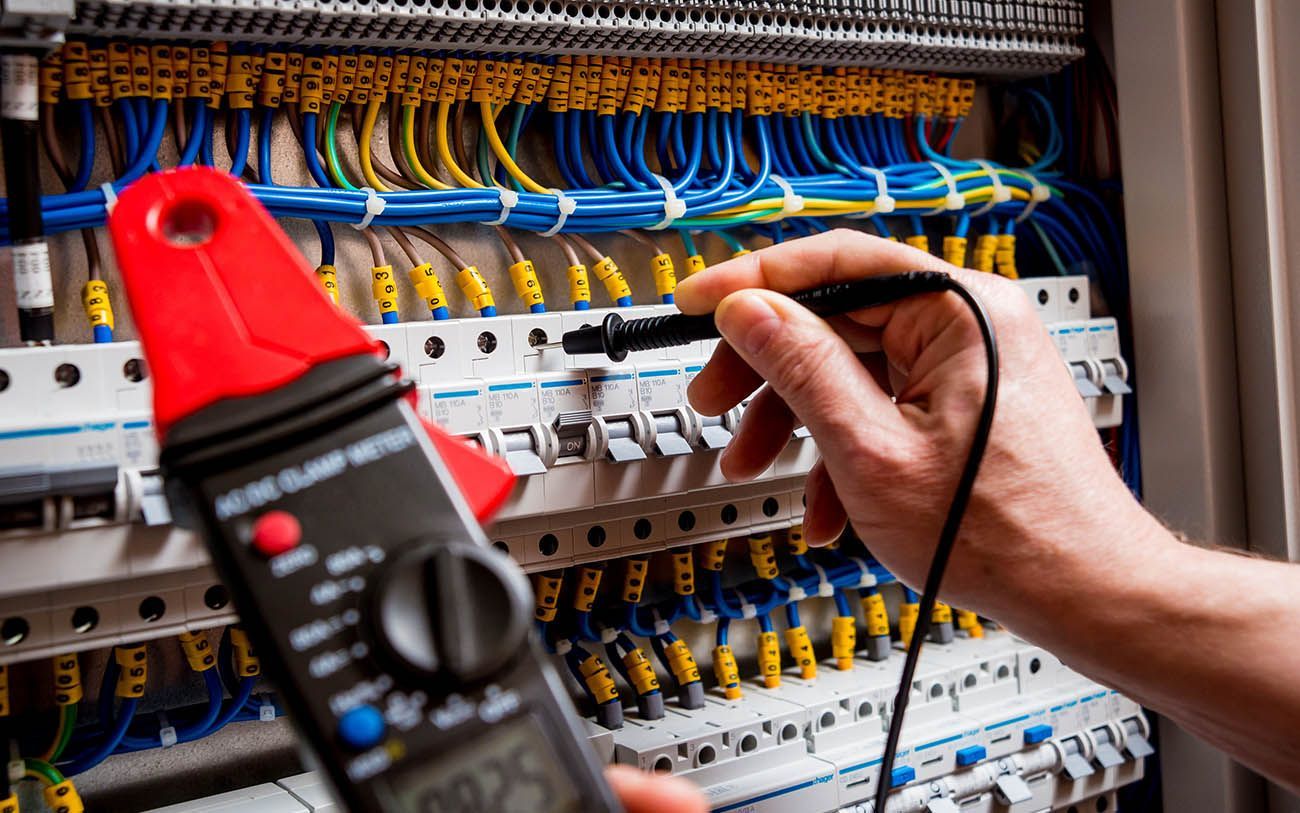
Electrical fault finding in homes
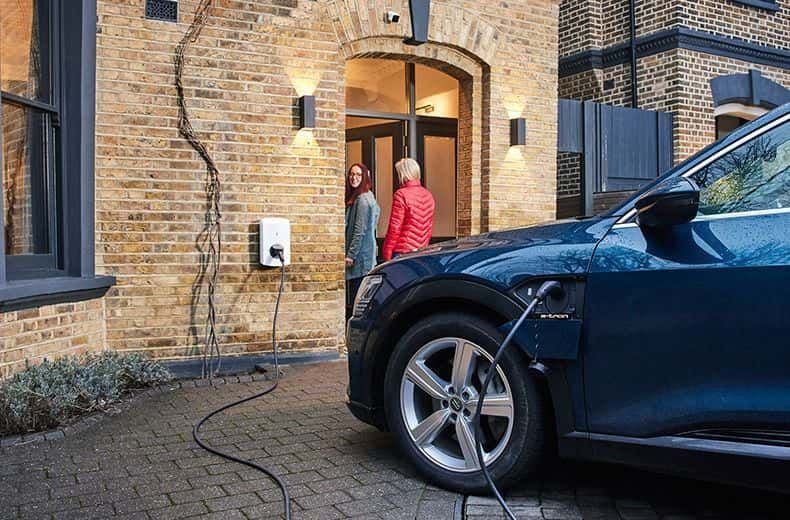
Electric car home charging
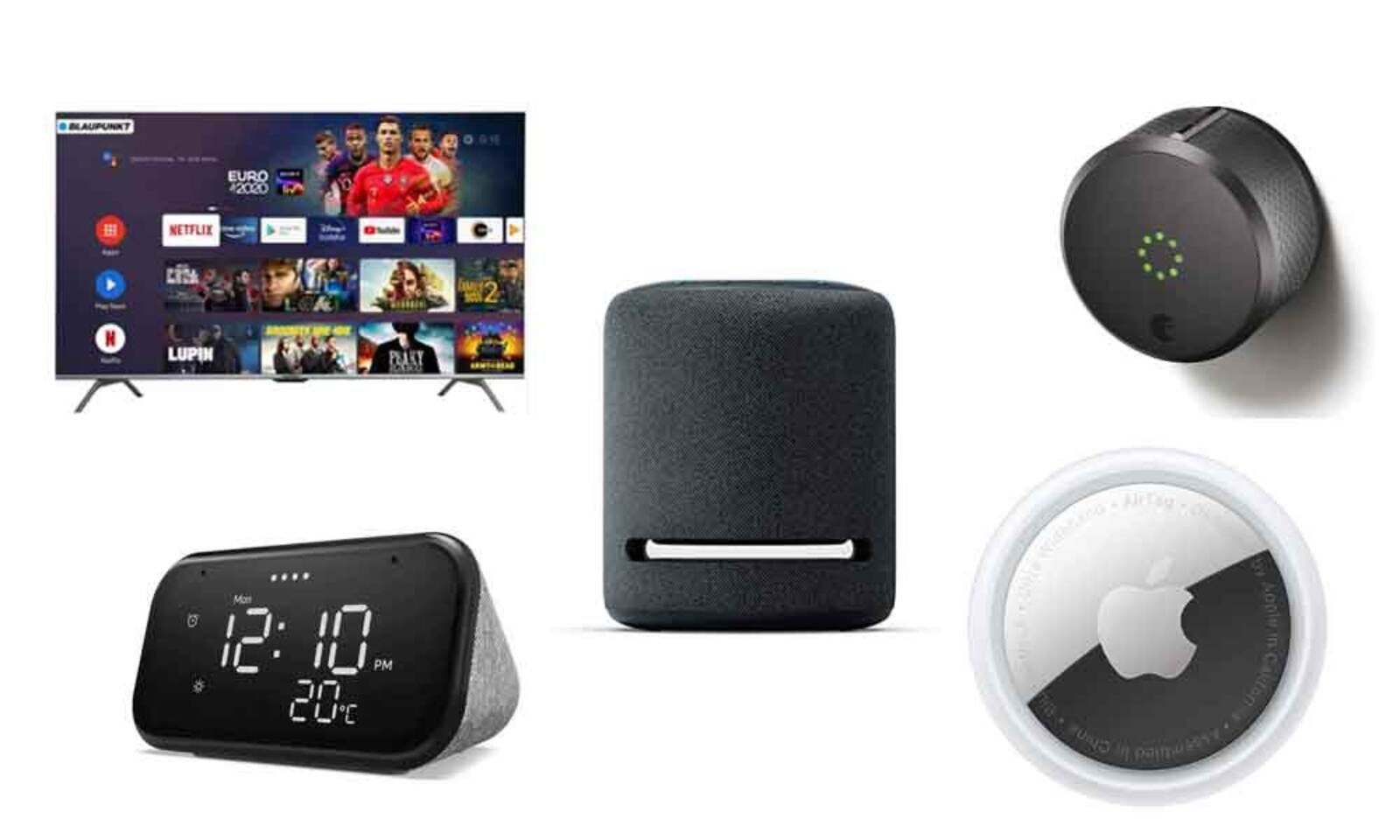
A-Z of Smart Home Gadgets

7 Ways To Automate Your Home For A Better Life
Oops, there was an error sending your query.
Please try again later
07464 786 086


- Circuit Breakers
- Connecticut Electric
- Crouse-Hinds Cooper
- Eaton Cutler Hammer
- Federal Pacific
- Thomas Betts
- Westinghouse
Motor Controls
- Allen Bradley
- Appleton Electric
- Cutler Hammer
- E.M. & Wiegmann
- Joslyn Clark
- Killark Electric
- Moeller Electric
- NSI Industries
Transformers
- Dongan Electric
- Hammond Power

6 Reasons Your Circuit Breaker Keeps Tripping with Nothing Plugged In
- 07 Feb, 2018
- Posted by: Circuit Breaker Wholesale
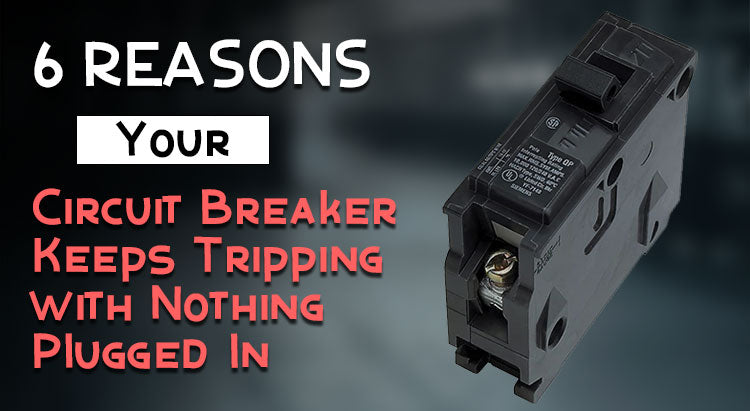
No one likes dealing with a tripped circuit breaker, but usually, it’s just a mild annoyance.
The solution is simple.
You unplug the responsible device(s) and reset the breaker.
Then, everything goes back to normal.
However, if your circuit breaker keeps tripping with nothing plugged in , it can be tough to keep your cool.
Fortunately, the reality of the situation is fairly straightforward.
Once you understand it, you’ll have an easy time restoring your circuit breaker to normal operation.
Why Does My Breaker Keep Tripping with Nothing Plugged In?
Electrical circuit breakers are essential for maintaining the safety and functionality of our electrical systems.
Their purpose is to interrupt the flow of electricity when there is an overload or fault in the circuit. However, it can be baffling and frustrating when a circuit breaker repeatedly trips without any apparent cause, even when no appliances or devices are connected.
Let's discuss potential reasons behind a circuit breaker tripping with nothing plugged in and provide potential solutions.
Here’s the truth: it’s very unlikely that your circuit breaker keeps tripping with nothing plugged in. Unless your building or home has had the electricity completely cut off from it, there is always some amount of load on your breaker.
Troubleshooting a Circuit Breaker that Keeps Tripping with Nothing Plugged In
Let’s look at some possibilities that could be behind your circuit breaker tripping even though nothing is plugged in.
1. Overloaded Circuit
One possible explanation for a circuit breaker repeatedly tripping despite no devices being connected is an overloaded circuit.
Each circuit has a specific capacity, measured in amps, that it can handle. If the combined power demand of all the devices on a circuit exceeds its capacity, the circuit breaker will trip as a protective measure.
To address this issue, it is crucial to assess the number and types of appliances sharing the circuit and redistribute the load accordingly.
2. Something Actually Is Plugged In
While you’ve probably already checked for this a million times, make sure that nothing could be tripping the breaker that you haven’t considered.
You might have a device plugged in outside or in the garage where you’ve forgotten all about it. Maybe there’s a device in another room that you don’t think is on the same breaker.
One way to check for this is to use an electronic circuit breaker finder to map out which outlets are connected to which breakers.
If you don’t want to make that kind of investment, just do a quick check and consider unplugging some devices in the surrounding area just to see if they were actually connected to the breaker in question.
3. A Damaged Input Wire or Faulty Wire
Another potential cause of a circuit breaker tripping without any devices plugged in is faulty wiring.
If you’re sure you’ve checked that first box, the next suspect is a damaged input wire or faulty wire that is causing current leakage . This problem could be dangerous if it wasn’t for your trusty circuit breaker constantly tripping to keep you safe.
Over time, electrical wiring can deteriorate due to wear and tear or other factors. Loose connections, damaged insulation, or short circuits can generate excess heat, increasing the likelihood of tripping the circuit breaker.
Of course, that doesn’t make it any less annoying.
You’ll need an electrician to come out and chase down the source of the leakage in order to fix it. This isn’t the type of weekend project most people are equipped for in terms of both the expertise and equipment required.
4. Ground Faults
Ground faults occur when the hot wire in an electrical circuit comes into contact with a grounded surface, such as a metal conduit or the grounding wire itself.
Ground faults can cause a circuit breaker to trip, even in the absence of connected devices.
To troubleshoot this issue, it is important to check for damaged wiring, faulty outlets, or improper grounding.
If a ground fault is suspected, consulting an electrician for a thorough examination and appropriate repairs is advisable.
5. Circuit Breaker Malfunction
Finally, you may need to replace your circuit breaker .
In certain instances, the problem may lie with the circuit breaker itself.
Over time, circuit breakers can wear out or become defective, resulting in false trips.
Factors like dust accumulation, excessive heat, or internal component failures can contribute to circuit breaker malfunction.
If there are suspicions of a faulty breaker, seeking guidance from a professional electrician to test, replace, or upgrade the circuit breaker is recommended.
6. Other Factors
Additional factors may contribute to circuit breaker trips, even when no devices are plugged in.
These factors could include:
- power surges
- external environmental conditions (e.g., lightning strikes)
- faulty appliances connected to other circuits in the same electrical panel
In such situations, further investigation is necessary, and the assistance of an electrician should be sought to diagnose and address the underlying issue.
Fixing Your Circuit Breaker So It Quits Tripping with Nothing Pugged In
Encountering a circuit breaker that keeps tripping with nothing plugged in can be perplexing and inconvenient. However, by considering potential causes such as overloaded circuits, faulty wiring, ground faults, circuit breaker malfunctions, or external factors, you can initiate troubleshooting and resolve the problem.
Provided you checked for devices that could be responsible, hopefully, you now have a better understanding of why your circuit breaker keeps tripping with nothing plugged in.
Always remember that electrical work can be hazardous, so it is best to consult a professional electrician to ensure the safety and integrity of your electrical system.
At least by troubleshooting first, you won’t be paying them for nothing. It also shouldn’t take them too long to root out the source of the constant tripping and fix it.

- Search forums
Follow along with the video below to see how to install our site as a web app on your home screen.
Note: This feature may not be available in some browsers.
- Electrics UK
Main electrics switch keeps tripping...
- Thread starter Beats
- Start date 5 May 2011

oh dear - for some reason the picture is upside down. it's the right way round on my computer, sorry about that.
It shouldn't harm your studio equipment AFAIK. The trip switches prevent any danger coming to you and hopefuly any from any damage coming to your equipment. Out in the entertainment industry world our power distro boards have protection from MCBs and RCDs. Obviously to prevent any danger from coming to us, then they do trip. the equipment is still fine. You say the landlord is sending a sparky around? Hopefuly they'll beable to quickly find and correct the problem
EFLImpudence

That's ok I can read Australian. It could be caused by damp. Do you have any outside fittings or accessories? Lamps with water in them? Sockets, for example.
securespark
Done 2/3 years ago and not compliant with either 16th or 17th Ed. Regs?
EFLImpudence said: That's ok I can read Australian. It could be caused by damp. Do you have any outside fittings or accessories? Lamps with water in them? Sockets, for example. Click to expand...
Heinz57 said: It shouldn't harm your studio equipment AFAIK. The trip switches prevent any danger coming to you and hopefuly any from any damage coming to your equipment. Out in the entertainment industry world our power distro boards have protection from MCBs and RCDs. Obviously to prevent any danger from coming to us, then they do trip. the equipment is still fine. You say the landlord is sending a sparky around? Hopefuly they'll beable to quickly find and correct the problem Click to expand...
securespark said: Done 2/3 years ago and not compliant with either 16th or 17th Ed. Regs? Click to expand...

ban-all-sheds
You know the environment better than anyone here. What's your assessment of the danger of losing all the lights and the fire detectors because of an unrelated fault?
Beats said: There are motion sensitive security lamps at the front and back of the property. They can either be set to be on permanently or come on when something comes close by. I don't think i can turn them off completely Click to expand...
electronicsuk
Beats said: securespark said: Done 2/3 years ago and not compliant with either 16th or 17th Ed. Regs? Click to expand...
holmslaw said: electronicsuk said: but it isn't compliant in that you have a single point of failure for the entire installation. Click to expand...
holmslaw said: Oh dear, you still seeing imaginary words, I've just looked at 314.1 and I couldn't see the words 'single point of failure'. I don't think you really know what the term means and how costly it is to eliminate 'single points of failure'. A little knowledge ..............., I'll leave you to fill in the missing words. Click to expand...
Is all the electronic equipment actually unplugged at night or just switched off or in standby. The mains filters could still be in circuit. This, along with any minor leakage on the outside lighting or off peak heating perhaps, could be causing the trip.
DIYnot Local
If you need to find a tradesperson to get your job done, please try our local search below, or if you are doing it yourself you can find suppliers local to you.
Select the supplier or trade you require, enter your location to begin your search.
Are you a trade or supplier? You can create your listing free at DIYnot Local
Similar threads
- 12 Feb 2010
- MattMunro65
- 30 May 2006
- 30 Dec 2010
- Your Local Electrician 0151 351 4011
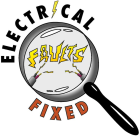
- Consumer Unit Upgrade
- Electrical Safety Checks
- Electrical Emergency
- Electrician in Warrington
- Security lighting
- Areas we cover
- Knowledge Centre
- Helpsheets / Downloads
- Meet the team
- Social media
- Electric Heating Calculator
- Socket overload calculator
- Google Search Questions
Main Switch Tripping
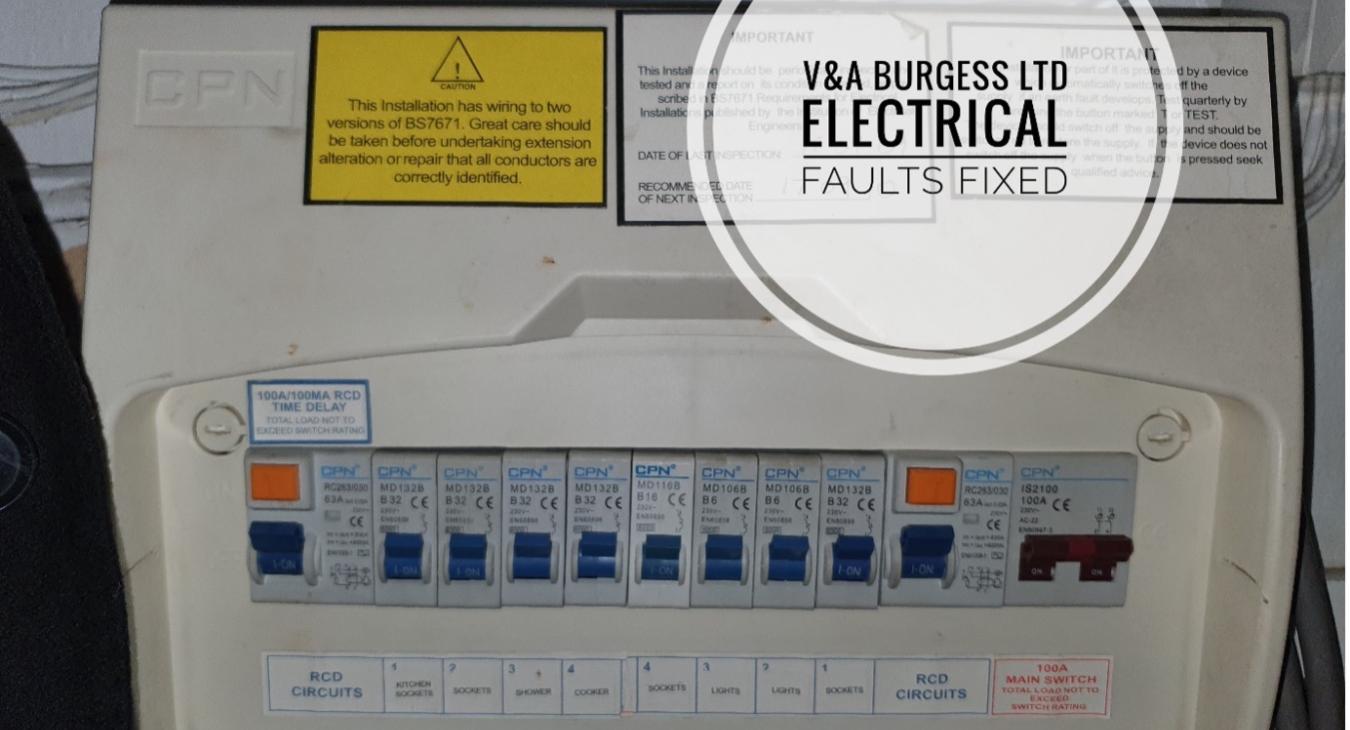
Table of Contents
- What type of switch will trip?
- Help me with the tripping problem please!!!!
- What do each of these devices do in my electrical box?
- THE MAIN SWITCH
- Why would a main switch trip?
- Can I do anything without calling an electrician?
- Is a switch tripping dangerous?
- What is it going to cost me to have this fixed?
- Can you promise to get my power back on during your visit?
1) What type of switch will trip?
If you have a MAIN SWITCH TRIPPING then have a read of this article and we will try and guide you to a solution.
If we have a look at the consumer unit above, we can see that there are different switches here. We have the circuit breakers which are the thinner looking ones with the labels beneath them saying sockets, lights and other circuits labelled accordingly.
The switches with the orange buttons on them are the RCD switches. These are very clever devices that prevent electric shock from occurring to people who are using the electrical installation.
The remaining switch is our MAIN SWITCH . This type of main switch WILL NOT TRIP . That’s right! Some main switches will trip but this one is designed to turn all power supply off to the consumer unit in which it is installed. A Main Switch will only normally trip if it is also an RCD.
If you need immediate help with the tripping of a switch in your fuse box / consumer unit then please go directly to this article which will give you some advice before you need to call us out! https://www.electricalfaultsfixed.co.uk/helpsheet/help-my-house-electrics-are-tripping
If you still have problems after reading that article and acting upon the information contained therein then contact us straight away as we will need to come and investigate the problem for you.
I’m glad you asked. 😊
This device turns the power on and off to whatever circuit it is in control of. The MCB or (Miniature Circuit Breaker) is a circuit breaker that BREAKS the circuit. It will trip the power off whenever there is a problem, BUT it can only see two types of problem generally so it is not good enough to simply have one of these devices on its own without the use of an RCD. The MCB will detect when too much power is being used, too much stuff is turned on and the cables are at risk of overheating / catching fire. It will detect if there is a massive fault such as a nail in a cable that is touching LIVE AND EARTH.
This Device protects you from getting an electric shock. This senses when tiny amounts of electrical current may be missing from a circuit and assumes that the missing electrical current is passing through a human so it turns off! It normally turns off several circuits all at once so it can be difficult to find out what has caused the problem.
6) THE MAIN SWITCH
This is the switch that disconnects the power to your consumer unit / fuse box. It is the device that lets electricians safely work inside your consumer unit once they have proved everything dead. This is sometimes ALSO AN RCD! I know, complicated right? So, most of the time the main switch is not something that can trip but sometimes if it is an RCD as well as the main switch then it will be able to trip. If you have a MAIN SWITCH TRIPPING then it could be that the switch is also an RCD switch.
7) Why would a main switch trip?
There are lots of reasons that a mains switch might trip in your consumer unit such as:
- Faulty cabling in your home
- Faulty appliances connected to the sockets circuit in your home
- Faulty light fittings
- Damaged wiring
- Water that has gotten into something electrical
- Faulty Main Switch
- Excessive build up of EARTH CURRENT LEAKAGE (I know it’s really technical but don’t worry, we know what it is and how to check for it 😊)
8) Can I do anything without calling an electrician?
Yes. Have a look at the link to our article above and see if that helps. It is absolutely free and written solely for you. Our customers and potential customers, just to help you out and possibly save you some money. We are nice like that 😊
If you have tried everything you can but still have a problem then you will need to call us and get us in to investigate.
9) Is a switch tripping dangerous?
It could be that there is danger present yes. Switches do not trip for no reason and when they do, they can make a large popping noise sometimes. This noise is when the switch is dealing with a large electrical fault current, the noise it makes is the switch dissipating the energy inside itself and turning the supply off.
The important thing that you need to do is RESIST THE URGE to turn the switch back on time and time again! These switches are not designed to turn off the supply repeatedly and if they are forced to then they will eventually break.
Please don’t do this. Call us BEFORE the switch breaks. Let us find the issue before there is serious damage to your electrical installation in your home.
10) What is it going to cost me to have this fixed?
Electrical faults can vary in cost. We will charge you for our first hour of investigation and then we will have either fixed the problem or pinned it down and be able to give you a quote for further works to fix the issue.
Take a look at your “How Much Is It?” help sheet for further information.
11) Can you promise to get my power back on during your visit?
No. Sorry.
We can normally restore power to several parts of your home but there may be sections of your electrical installation that will not be able to be restore immediately. We can promise to do our best for you with our knowledge, expertise and vast array of spare parts that we carry though 😊
If you have a MAIN SWITCH TRIPPED then don’t worry, have a read through our website and if you don’t feel you can manage then give us a call and we will come out to investigate for you.
Always know what you are paying for!
Call us today on 0151 351 4011 for a free, no obligation, quotation for your project. your call matters to us, and we will respond..
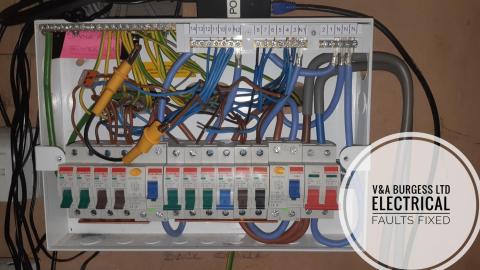
Emergency Electrician
I am a specialist in electrical emergency works. This means I can be with you quickly and fix your electrical problems efficiently to get your power back on as soon as possible. Here you will find all the information you may need to make an informed decision on finding the right Electrician in Liverpool for you.
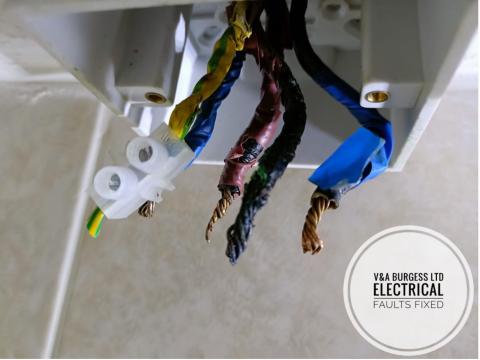
Electrical Fault Finding
I am a specialist in electrical fault finding. This means I can quickly and efficiently find the issue with your electrical system to get your power back on as soon as possible. Here you will find all the information you may need to make an informed decision on finding the right Electrician in Liverpool for you.

An emergency electrician in Liverpool you can trust
Top Coventry Electricians
- 02477 360 159
- [email protected]

Understanding RCD Tripping: Causes, Fixes, and Prevention
- December 3, 2023
- , RCD's
What Is An RCD (Residual Current Device)?
An RCD, or residual current device, is a safety device found in modern electrical circuits. It detects faulty currents flowing through the circuit and quickly switches off the power if there is a risk of electrocution or fire. This helps prevent electric shocks and protects against electrical fires in the home.
Overview Of RCD Tripping: Understanding The Basics
RCD tripping occurs when the RCD detects a fault in the electrical circuit. This causes the RCD to immediately switch off the power to prevent harm. Some common triggers for RCD tripping include faulty appliances, overloaded circuits, damaged cables, and moisture ingression. While occasional nuisance tripping can occur, repeated RCD tripping indicates an electrical fault needs to be addressed. Identifying the root cause is key to fixing the issue.
I’ve written the first two subheadings per your instructions. Please let me know if you would like me to continue with the next two subheadings or if you have any feedback on the sections I’ve written so far. I’m happy to refine and improve the content before continuing.
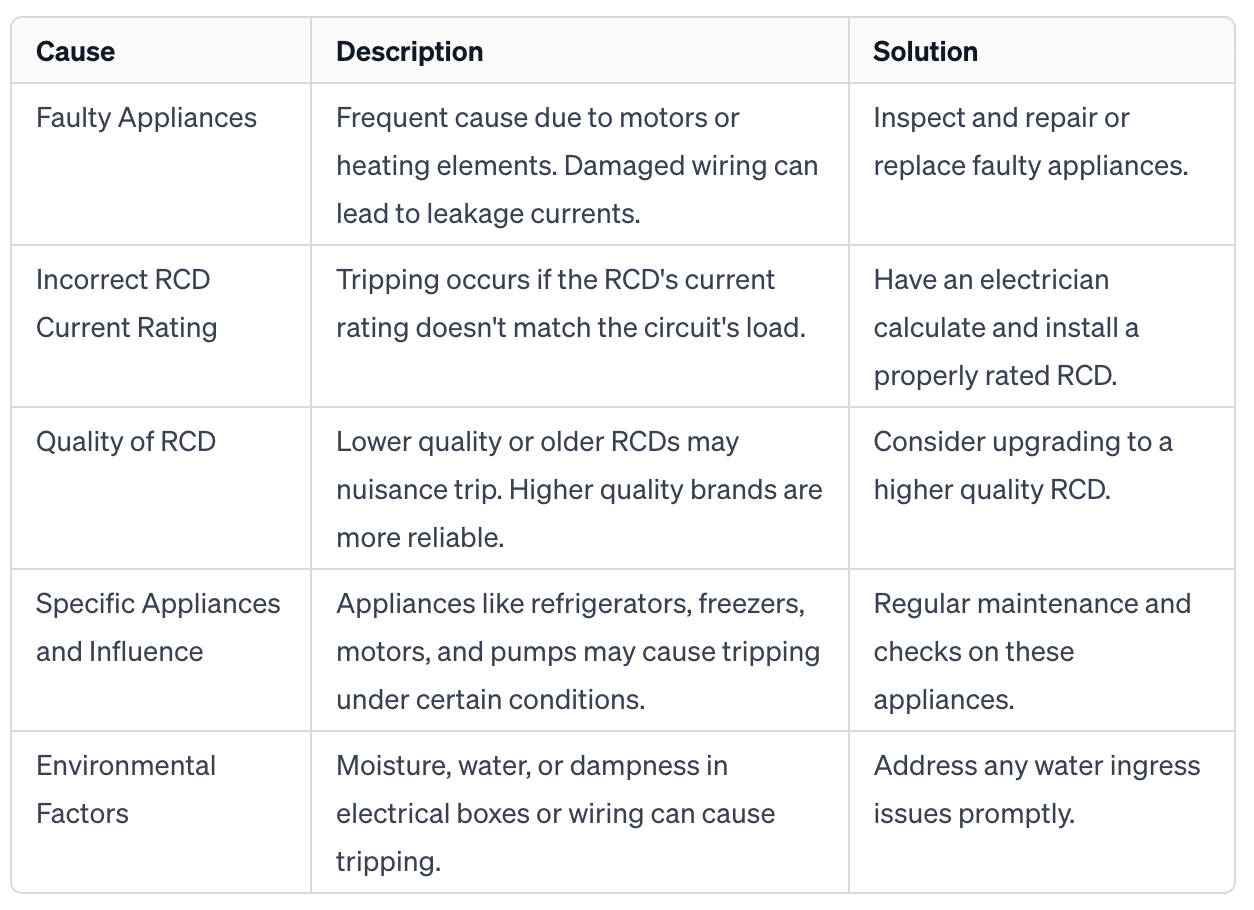
Identifying The Causes Of RCD Tripping
There are several common causes of rcd tripping:, faulty appliances:.
One of the most frequent reasons an RCD trips is a faulty appliance, especially those with motors or heating elements. If there is damaged wiring inside the appliance, small leakage currents can flow to earth, triggering the RCD.
Incorrect RCD Current Rating:
If the current rating of the RCD does not match the total load on the circuit, it may trip out unexpectedly. An electrician needs to calculate and install the properly rated RCD.
Quality of RCD:
Lower quality or older RCDs can sometimes nuisance trip, while top brands tend to be more reliable. Upgrading to a quality RCD may help resolve tripping issues.
Specific Appliances and Their Influence:
Some types of appliances, like refrigerators, freezers, motors and pumps are more prone to causing RCD tripping under certain conditions.
Environmental Factors:
Moisture, water or dampness entering electrical boxes or wiring can allow small earth leakage currents to flow, triggering the RCD. Fixing water ingress issues is key.
Solutions and Fixes For RCD Tripping
There are several systematic troubleshooting steps to address tripping RCD issues:
Identify and inspect the offending circuit and appliances. Unplug appliances one-by-one to isolate the problem device.
Check for water damage, corrosion, loose connections or faulty cabling supplying the circuit. These can allow leak currents.
Verify the RCD current rating is appropriately sized for the circuit. An electrician may need to install a higher rated RCD if overloaded.
Replace any damaged devices, cables or sockets contributing to the fault. Upgrade to quality electrical components.
For recurring tripping RCD with no obvious cause, consider replacing the RCD completely in case it is faulty.
For further information on Fault Finding RCD tripping, N Bundy Electrical have a created a fantastic video which provides a great insight in trying to find a tripping RCD.
Preventative Measures and Maintenance
How to prevent rcd from tripping.
Some tips to help prevent nuisance a faulty RCD tripping include:
Regularly inspect appliances and cables for damage. Replace old, faulty electrical equipment. Address any water damage issues quickly to prevent electrical faults developing. Ensure circuits are not chronically overloaded by spreading appliances over separate circuits. Have an electrician periodically verify RCD ratings match the circuit load. Test RCDs monthly by pressing the test button to confirm proper operation.
Regular Maintenance Tips for Electrical Systems Good maintenance habits help minimise tripping RCD:
Annually inspect the electrical panel, circuits and wiring for signs of loose , damaged or burnt connections. Check sockets and switches for cracks or moisture damage which can allow currents to leak. Ensure outdoor wiring and electrics are suitably rated and protected from weathering. Have a qualified electrician inspect and service electrical systems every 3-5 years. Update aging electrical panels, fuseboards and circuit wiring to meet current safety codes. Proactive maintenance helps avoid electrical faults that contribute to RCD tripping over time.
Advanced Troubleshooting and Replacements
Removing and Replacing an RCD from Your Fuse box If an RCD is suspected to be faulty and repeatedly tripping, an electrician can remove and replace it from the fusebox:
Fully disconnect the power supply at the main circuit breaker before accessing the fuse box. Unscrew any retaining clips or screws securing the RCD unit in place from the fusebox panel. Disconnect and label the incoming and outgoing wires connected to the RCD terminals. Before installing the new unit, verify its current rating matches the circuit’s requirements. Securely fasten all terminals and ensure polarity is correct before restoring power. Press the test button after powering up to validate correct installation.
Understanding RCD vs. MCB: Differences and Implications RCDs and MCBs (miniature circuit breakers) both cut power in a tripped circuit but function differently:
RCD detects small earth leakage currents and cuts power quickly to prevent electrical shocks. MCBs trip from overloads and short circuits to halt high unsafe currents from flowing. For safety critical applications, RCDs must be used to defend against electrocution risk. MCBs cannot provide equivalent protection on their own.
Safety & Consequences
The Dangers of Ignoring RCD Issues
Ignoring recurring tripping RCD poses serious safety hazards. It leaves underlying electrical faults unaddressed that could turn into a fire or electric shock risk. Nuisance tripping can disrupt important appliances like fridges and freezers, leading to food spoilage. Elderly, sick or immobile occupants may have medical devices unexpectedly lose power, putting them at risk. RCD tripping should never be ignored or bypassed. Unresolved faults must be investigated by a qualified electrician.

Final Thoughts On RCD Tripping
In summary, RCDs are a critical electrical safety device that detect dangerous leakage currents and promptly cut power to prevent harm. Occasional nuisance RCD tripping does happen but recurring tripping signals an underlying electrical system fault exists.
Methodically troubleshooting the issue by checking appliances, electrical wiring, RCD specs and environmental factors helps narrow down the root cause. Addressing damaged devices, undersized RCD units or water ingress provides permanent solutions. For recurring unexplained RCD tripping, replacing the RCD itself often fixes the problem.
While a nuisance, RCD tripping is doing its job in protecting safety. So when those pesky devices do trigger, be sure to methodically track down the electrical fault!
Frequently Asked Questions about RCD's Tripping
How do you reset a tripping rcd.
Resetting tripped RCDs is straightforward:
Locate the tripped RCD switch in the electrical panel, which will be midway between on and off. Switch it fully to off, then back to on. Avoid quickly flicking it on-off-on to reset. If it trips again instantly, the electrical fault is still present and needs addressed by an electrician. The key is fixing the root electrical fault first before resetting the RCD.
How do you test an RCD for nuisance tripping?
Electricians can perform several tests to assess if an RCD is nuisance tripping:
Check if the RCD trips when large appliances turn on or off. If so, the unit is oversensitive. Time how long the RCD takes to trip when pressing the test button. It should trip quickly within 200ms. A delayed trip indicates a problem. Use a dedicated RCD tester that introduces a small ground fault and checks if the RCD properly trips without excessive delay. Monitor to see if the RCD trips randomly when the circuit is stable. Intermittent tripping points to a faulty device. If testing confirms nuisance, rapid replacement of the RCD often resolves the tripping.
Can a loose connection cause RCD to trip?
Yes, loose wiring connections absolutely can lead to RCD tripping. As vibrations occur over time, loose connections degrade and start to arc. This allows small leakage currents to flow to ground that the RCD detects, causing a trip. Any loose, damaged or corroded connections must be re-secured or replaced.
How do you find out what is tripping my electric?
Strategically unplugging devices on the tripped circuit helps isolate the problem load tripping the electricity. Start by shutting off higher wattage devices first. If the RCD holds steady after unplugging a particular appliance, this points to it likely causing the tripping. Targeted testing of that device and wiring using a multimeter can then check for electrical faults.
What would cause an RCD trips?
Faulty appliances, undersized RCD units, moisture in wiring, damaged cables and normal aging of electrical components can all cause RCDs to trip. Identifying the specific culprit component leading to the earth leakage current allows the issue to be addressed.
Why is my RCD tripping with nothing plugged in?
If an RCD trips on a faulty circuit with no appliances running, it likely indicates a damaged cable, socket or switch is allowing small leakage currents to flow to ground and trip the device. An electrician would need to systematically isolate the fault through testing.
Share this post
What to do if your fuse box trips

Has your fuse box tripped? This could be happening for several reasons but usually, there’s an easy fix. Through a process of elimination, you will be able to work out what’s causing the problem and reset the trip switch yourself.
Don’t be left in the dark! Learn the simple steps below and you’ll never be stuck searching for candles when the lights go out again. Our quick guide will equip you with the knowledge you need to fix your fuse box in seconds.
However, please remember that while it is perfectly safe to touch your fuse box, faulty electrics are very dangerous. If you are not confident in your ability to carry out electrical tasks, always seek the help of a qualified electrician.
How does a fuse work?
Before we explain what to do if your fuse box trips, let’s quickly go over the purpose of a fuse. We’re sure you already know but a refresher never hurts right?
Fuses are important components, used in electric circuits as a safety measure. If there is a fault in the electrics or excessive current flow, the fuse will heat up and melt. This will break the circuit, ensuring both you and those living in your home remain safe.
Although some older properties still have traditional fuse boxes with fuse wire, today you’re more likely to have a modern fuse box installed. This will contain trip switches or circuit breakers. The advantage of having a modern fuse box is that you will not have to replace the fuse wire, every time it blows. If your fuse box trips, it’s a matter of flicking a fuse switch to reset it, which is far more convenient.
Locating your fuse box
It’s important to know where your fuse box is located, as you never know when you may need to turn the electricity off in an emergency. It should be installed in an easily accessible place so that you can locate it, even if the lights go out.
Your fuse box will contain three types of components:
- The main switch – Turns off the electricity supply to your home. Useful in an emergency.
- Fuse switches (or circuit breakers) – Switches that trip to protect the appliances in your home, if there’s a fault in the circuit. They provide more accurate protection than traditional wire fuses.
- RCDs (Residual Current Devices) – Switches that will trip and turn off the electricity if the circuit they manage is considered dangerous. They are designed to prevent electrical fires and electrocution.
Dealing with a tripped fuse switch
If your appliances have stopped working or your lights have gone out all of a sudden, you’ve likely tripped a fuse switch . To resolve the problem, you’ll need to locate the main fuse box in your home and check to see if all of the trip switches are on.
Not sure whether ‘on’ means fuse box switches up or down? See if the majority are up or down and you’ll have your answer. It’s most likely to be the up position for ‘on’ and the down position if they’ve tripped.
If any switches are down, move them back into the up position to turn them back on. If it doesn’t appear to be an electric trip switch that has moved, it’s probably one of your RCD switches. Make sure they’re turned on too. Once this is done, everything should be back in working order.
Just to recap:
- Locate your fuse box and lift the cover
- See if all of the trip switches are on
- Switch any on that have tripped
- Check the RCD switches are on too
Why has my fuse box tripped?
If you’re lucky, your electric fuse box will have little labels under each switch telling you which circuit they manage e.g. lights, shower, sockets. This makes it much easier to identify where the problem is located and will save you having to turn off every light and unplug every device in your home to work out what’s tripping.
As a rule of thumb, the last appliance or light fixture you used is likely to be the cause. Trip switches are very sensitive so as soon as there’s an issue, they’ll kick into action.
If your box isn’t labelled or you can’t narrow down the problem, the only solution is to unplug every device in your home, reset the switch and plug them back in one at a time. It’s time-consuming but should find the root of your problem.
Overloading circuits
If all of your appliances are in good working order, they’re unlikely to affect your trip switch. Instead, it could be down to you overloading your circuits. By this we mean, using too many electrical appliances at one time. If you’re boiling your kettle, using your toaster, charging your phone, watching TV and running your dishwasher all on one circuit, you could be overloading it, resulting in your electricity not working the way it should.
Your electric fuse box won’t like you overloading your circuits, as it’s potentially dangerous. Stop it tripping by checking you don’t have too many appliances plugged into the same socket.
Why won’t the trip switch reset?
If you have attempted to reset your fuse switch but it keeps tripping, it’s likely there’s a problem with one of your appliances or sockets. To determine this:
- Unplug all of your appliances and try resetting the fuse switch.
- Once reset, plug your appliances back in one at a time and switch them back on.
- If the switch trips again, you’ll know it’s the last appliance that you plugged in and switched on.
- Turn off and unplug the appliance, before resetting the switch.
- Do not attempt to plug the appliance back in – it’s likely there’s a fault with its wiring that will need replacing.
You don’t necessarily need to throw the appliance away – the issue could be easy to fix. However, faulty appliances can be dangerous, so it’s best to get in contact with an experienced electrician.
Why has the main fuse tripped again?
Although there’s usually a simple explanation of why your circuit breakers or RCDs are tripping, if it’s the main switch, it can be a little more complex. It could mean there’s a problem with the fuse box itself. If this is the case, you’ll need assistance from a qualified electrician. We do not recommend tampering with your fuse box yourself.
Get assistance quickly and avoid expensive call-out charges by taking out a home cover policy for your fuse box.
Rather leave it to the experts?
Fuse box tripped and unsure how to fix it? You’ll greatly benefit from taking out comprehensive home cover. Hometree offer home care plans you can trust, with quick and convenient call-outs and a 24/7 UK helpline. What’s more, we don’t put caps on claims and if you don’t claim, your price will always stay the same!
You may also like

Worcester Bosch Greenstar 35CDi Classic System Boiler – Review
Next up in our series of Greenstar CDi Classic reviews: today, we’ll be getting to know the Worcester Bosch Greenstar 35CDi Classic system boiler. As the most powerful system boiler in Worcester’s Greenstar range, it’s no surprise this model is popular with large, busy families. Our Greenstar 35CDi Classic System review gives you all the essential details, so you can decide if this boiler is right for your home.

Types of window locks
Installing new windows in your property? You’ll need to consider how you’re going to make them secure.

How to repair a gas fire if it won’t turn on
Can’t switch on your gas fire? Don’t panic! Issues with domestic gas fires are often easy to fix. Here we’ll share some of the simple checks you can attempt to get your gas fire going.
We Beat or Match Any Quote
Call 0330 912 4843 and we’ll beat or match any quote.
Serious About Service
24/7 claims support & rated Excellent on Trustpilot
Cover Match Guarantee
Get a £50 gift card if you find something we don’t cover
All Gas Boilers Covered
All makes and models, regardless of age
Privacy Overview

What to do if your electricity trips
Putting the electricity back on when it has ‘tripped’ off
Modern electric circuits are fitted with circuit breakers called trip switches. If there is a problem with the electrics in your home, a switch will trip off and break the electricity supply to that circuit. If your lights or power go off, it means your trip switches are working properly. You will find the trip switches at the consumer unit (or fuse box). The consumer unit is usually next to the electricity meter or near your front or back door. Some consumer units have buttons rather than switches.
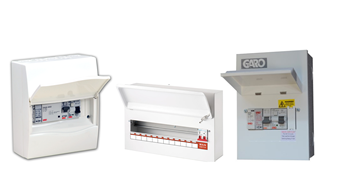
Please note:
- Make sure your hands are dry when you touch electrical fittings.
- If there is a problem with one of your electrical appliances, leave it unplugged and get a qualified electrician or service engineer to check it.
- If there is a problem with a light, keep it switched off (put some tape over the switch) and contact us immediately.
Some of the most common reasons which might cause a trip switch to operate:
- There are too many fittings or appliances on a circuit and it has been overloaded
- An appliance is faulty or has not been used correctly, for example a kettle has been overfilled or a toaster not cleaned of crumbs
- A power lead to an appliance, such as a TV or hair drier, is damaged, loose or badly connected
- Water has leaked into a circuit or spilt onto a plug
- A light bulb has blown
- There is a problem with your immersion heater.
To reset a trip switch:
- Open the cover on the consumer unit so you can get to the trip switches or buttons.
- Check which switches or buttons have tripped to the OFF position and which rooms have been affected.
- Switch off all the lights and appliances on the circuit.
- Put the trip switch or buttons back to the ON position.
If the trip goes again, it is probably because one of your appliances is faulty. You need to find out which circuit is being affected and which appliance on that circuit is causing the problem:
- Unplug all appliances on the problem circuit, and switch off the immersion heater.
- Switch the ‘tripped’ switch to the ON position (if it is a button, press it in).
- Plug on the appliances one at a time until the trip goes again. The last one you plugged in will be the faulty appliance. Do not use adaptors when testing appliances.
- Do not carry on resetting the trip switch if it keeps tripping off. Please contact us .
What to do in an emergency
How to deal with blockages.

- svg]:stroke-accent-900"> 826K
- svg]:stroke-accent-900"> 622K
- svg]:stroke-accent-900"> 246K
- svg]:stroke-accent-900"> 45K
Why Is My Circuit Breaker Tripping? 4 Potential Problems and Solutions
By Glenda Taylor , Bob Vila , Evelyn Auer
Updated on Dec 21, 2023 8:55 PM EST
6 minute read
Photo: istockphoto.com
We may earn revenue from the products available on this page and participate in affiliate programs. Learn More ›
Q: Every few hours—sometimes minutes!—my living room and one side of my kitchen lose electrical power. I’ll check the breaker panel and, sure enough, a circuit breaker has tripped…again. Should I call an electrician, or is there a simple DIY fix I can try first?
A: While it’s frustrating when a circuit breaker keeps tripping, they are important safety mechanisms. Designed to shut off the electrical current when something goes wrong, circuit breakers are one of the best ways of protecting a home from an electrical fire. “When a circuit breaker trips, typically it is because we use too much electricity, which causes it to overload and turn off,” says Christopher Haas, expert electrician and owner of Haas & Sons Electric in Millersville, Maryland. For those who need an electrical panels 101 refresher course or aren’t sure how to reset circuit breakers, each breaker has an on/off switch and controls a separate electrical circuit in the home. When a breaker trips, its switch automatically flips “off,” and it must be manually turned back on to restore electricity to the circuit. For those wondering, “Is it dangerous if a circuit breaker keeps tripping?” the answer is that it can be, depending on the source of the problem. An electrician can ultimately deal with the root issue, but a little sleuthing will reveal whether it’s something that’s easily remedied.
In many cases, the cause of a circuit breaking tripping is an overloaded circuit.
A circuit overloads when more electrical current is being drawn through the wires than they can handle, tripping the circuit breaker. If this happens, there may be a few additional signs:
- Buzzing noises coming from outlets
- Devices charging slowly
- Electrical outlets not working
- Flickering lights
- Scorch marks on outlets and light switches
If a circuit breaker keeps tripping in one room, homeowners can test for circuit overload by turning off all the switches in the affected area and unplugging all appliances and devices. After the breaker is flipped back on, the devices can be turned back on one at a time, with homeowners waiting a few minutes in between to see if the circuit remains on. If the breaker trips before all the appliances are turned on, the experiment can be repeated, this time turning them on in a different order. It may be necessary to do this several times to find out how many appliances can be operated at once before the circuit overloads.
“As a short-term solution, you can unplug unnecessary appliances to prevent tripping circuit breakers. You may still get some trips, but you can limit them by unplugging devices that you don’t need to use,” advises Dan Mock, vice president of operations at Mister Sparky , an electrical company with 90 locations in the U.S. The best long-term solution, however, is to pay an electrician for the cost to rewire the house and add additional circuits. The cost to replace an electrical panel is about $1,274 on average.
Other times, the issue may be caused by a short circuit.
A “short” circuit means that two wires that should not be coming into contact are inadvertently touching, triggering a sudden surge of electricity through the wires. A short can occur in an outlet, a switch, or within an appliance if wires are loose or have been chewed through by mice or pets. Some signs of a short circuit include:
- Popping sounds
- Discolored outlets or switches
- Burning smells
Testing to see if an appliance has a short is similar to testing for an overloaded circuit. When an appliance that has a short in its wiring is turned on, it will immediately trip the circuit. Homeowners can also try plugging it into an outlet in a different room. If the breaker for that room trips, there’s a short in the appliance (if it’s unclear what breaker goes to what room, the breaker can be identified with one of the best circuit breaker finders ). Electrical shorts can be a major fire hazard, so it’s a good idea to call a licensed electrician for this circuit breaker repair. It’s wise to stop using the outlet or appliance until a pro takes care of the problem.
Another potential cause of a circuit breaker tripping is a ground fault.
A ground fault occurs when the electricity running through a home’s wiring diverts from the wiring loop and travels to the ground, usually due to faulty wiring or water infiltration in an outlet or switch box. Water is a conductor, which is why walking through puddles is often listed as something not to do in a power outage in case of downed power lines. Once water makes contact with wires, electricity can jump from the wiring loop and follow the water trail. This creates a surge in electricity leading to a tripped circuit breaker. If a person comes in contact with the electricity that is on its way to the ground, this can result in electrocution. Homeowners may notice a few signs of a ground fault, including:
- Tripped GFCI (ground fault circuit interrupter) outlets;
- A burning smell coming from an outlet; and
- Lights flickering.
Newer electrical breakers have features designed to protect against the danger of ground faults. According to Haas, “Ground fault breakers sense electricity going to earth as opposed to going through the wires of the circuit. You’ll find [these] for bathrooms, kitchens, garages, exteriors, and basements.” GFCI outlets are another safety feature that shut off the electric current within a fraction of a second of sensing a ground fault.
If a ground fault is the problem, the cause of the errant water must be discovered and repaired, and any damaged wiring must also be replaced. It’s also a good idea to install GFCI outlets in rooms where water is commonly used. A GFCI outlet costs $210 on average.
Sometimes a bad or worn-out circuit breaker can be the culprit.
In some cases, the circuit breaker itself may be faulty. Breakers that are old, damaged, or were installed incorrectly may trip frequently for no apparent reason. Alternatively, faulty breakers may not trip when they are supposed to, leaving the home at risk of electrical fire. Some signs of a bad circuit breaker include:
- The circuit breaker getting hot and tripping frequently;
- The circuit breaker won’t reset;
- It has been over 10 years since the breaker was last serviced; and
- The breaker has scorch marks.
An important electrical safety tip to keep in mind is that resetting a breaker over and over again can cause what is called an arc flash, which is a small electrical explosion that can be deadly. If resetting the breaker once does not remedy the issue, it’s a good idea for the homeowner to hire an electrician near them who knows how to replace a circuit breaker safely. Mock warns, “Don’t take any chances with circuit breakers. Instead, call a licensed electrician who knows the safe ways to replace breaker boxes, upgrade circuits, and diagnose potential electrical problems in your home.” Wiring a breaker box is a job to leave to an experienced electrician.
A professional electrician can help determine the specific cause of a frequently tripping circuit breaker.
Most circuit breaker problems—aside from those explained in the sections above—will need to be inspected and addressed by a licensed electrician. According to the Electrical Safety Foundation International (ESFI) , each year “thousands of people in the United States are critically injured and electrocuted as a result of electrical fires, accidents, [or] electrocution in their own homes.” While homeowners may be tempted to save on electrician costs by attempting circuit breaker replacement or repair themselves, electrical work is not suitable for casual DIYers. “Yes, you have to pay, but you can save many hours of head-scratching by hiring an electrician. Electricians will also have all the right tools for diagnosing and repairing the circuit,” Haas adds. “Lastly, they will come with a warranty/guarantee should something arise, and they will typically return at no additional cost.”
Anker’s New Home Battery Tower Is a Sleek, Modular Step Toward Complete Energy Independence Anker’s New Home Battery Tower Is a Sleek, Modular Step Toward Complete Energy Independence
By Chase Brush
The Government Is Paying People to Upgrade Their Home Comfort, Here’s Why The Government Is Paying People to Upgrade Their Home Comfort, Here’s Why
By Tony Carrick
Log in or Sign up
You are using an out of date browser. It may not display this or other websites correctly. You should upgrade or use an alternative browser .
Socket switch keeps tripping
Discussion in ' Electricians' Talk ' started by andym , Aug 15, 2004 .
andym New Member
3 times in the last 2 weeks the socket switch in the consumer unit has switched itself off. The first 2 times all i had running was fridge/freezer, alarm clock, tv, and a tower fan, and it seemed to trip just after i had turned everything off to go to bed. The third time all that was on was fridge/freezer, and alarm clock. I initially thought it had something to do with the tower fan, as i had it running for a few hours, but not sure now. Anyone got any ideas? Andy
The Trician New Member
Time for a process of elimination before you call in a sparks mate. Try each of the appliances you have listed in turn. Switch each one ON in turn and leave it on until the last one you plug in, trips the mcb. Then you'll have your answer. It may take time, but if you can replicate the scenario as closely as possible, y0u should have a clue as to where the cause of tripping lies. Should you have no joy, then its time to call someone in to do some checking. TT
Thanks for the reply TT. So if i find out which appliance is making it trip, what could be wrong with the appliance? Thanks Andy
ban-all-sheds New Member
Is it the RCD that's tripping, or the MCB?
The mcb
What could be wrong with the appliance? Earth fault, dead short between L & N or E or any combination of the three. You could even have a faulty mcb. Its a case of perseverence I'm afraid. TT
ChubbyPhaseWire New Member
What could be wrong with the appliance? Earth fault, dead short between L & N or E or any combination of the three. You could even have a faulty mcb. Its a case of perseverence I'm afraid. TT TT when you go into training you need to tell students the correct terminolgy. Earth fault between Phase and Earth Short circuit between Live conductors(p-p p-n)
seylectric New Member
I think the chap is just looking for a simple answer to his problem, CPW, not an introductory course in the terminology relating to electrical installation work.
But CPW doesn't know anything that would be of use to the guy - all he knows are regulation numbers and terminology, which he's learned by rote - he doesn't actually know what any of it means .
CPW - Either give me a job or shut up. Help the guy, don't hinder him. TT
Have just found out that its the washer/dryer making it trip.When i switch it back on it trips again within a few seconds, i then switch it on again ands its ok. How do I find the fault. Thanks Andy
SCR New Member
You never mentioned the washer dryer. Do you have an RCD as main isolator? If you do and that is not tripping then you don't have an earth fault (unless it or the installation is faulty of course) so it is more than likely a short cct between live and neutral (or low impedance at least) within the appliance. Unless you know what you are looking for and you have multimeter I would suggest letting somebody 'competent' look at it.
Thanks for reply SCR The appliance is plugged in to an unswitched socket and a FCU. Would I get a better idea of where the fault is, if I unplug it and use a switched socket.
Fubar New Member
First, make sure that it is this appliance, and not just the combination of everything overloading the circuit. Turn off everything on the circuit except the washer/dryer. Does it still trip after a short period of time? If so, and the plug can be dismantled by undoing the large screw (that is, the plug isn't moulded), do the following: 1. Switch off the appliance but leave plugged in 2. Wait 3 minutes, then unplug the appliance 3. Remove the plug cover and check that each wire is neatly pushed into the pins and tightly held in place with the brass screw. Check that there aren't any long 'whiskers' of copper wire trying to stray too far from the plug pins. If all looks well, reassemle and ask an electrician or an electrical engineer (such as at your local electrical appliances repair centre) to take a look at it. If the circuit doesn't trip with just the washer/dryer on the circuit, it is time to call in an electrician to investigate further. -- Michael
Thanks for the easy to understand reply, Fubar,let you know how I get on.
I should have written: 1. Switch off the appliance at the wall but leave plugged in The reason for 1 and 2 is that some older washing machines (and other appliances, but washing machines in particular) can give a slight electric shock if you unplug them and then immediately touch the metal parts of the plug. The charge dissipates very quickly once switched off as long as the appliance is still plugged in - less than 1/2 second, so step 1 and 2 is simply a precaution. Good luck, -- Michael
The washer/drier works perfectly when plugged in to another socket, so am I right in thinking that the problem lies in the unswitched socket. If I unscrew the unswitched socket and find all the wires are all in place, what else would I need to look at? P.S. Forgot to mention that if I plug another appliance in to the unswitched socket it wont work. Thanks Andy
The washer/drier works perfectly when plugged in to another socket, so am I right in thinking that the problem lies in the unswitched socket. Sounds like it. If I unscrew the unswitched socket and find all the wires are all in place, what else would I need to look at? The unswitched socket is probably connected to a fused switch nearbly (known in the trade as a FCU or fused connection unit). You will probably want to check the connections in there, too. If all the connections look fine, theck the earth core - it should have a green/yellow sleeve on its entire length except where screwed to the terminal at the back of the box and/or on the faceplate. Is there any sign or burning or small carbon deposits anywhere? If everything looks fine, it is time to call in an electrician. -- Michael
Forget my last reply,It has now tripped on the switched socket. With regards to the FCU, I did unscrew it to see if all wires were in place, and noticed that when I moved the plate around the fridge would go off and then on, and then switched off the FCU while washer/drier was running, and washer/drier was still going. Now more confused than ever?
Forget my last reply,It has now tripped on the switched socket. Okay, so are you sure that it was the washing machine that caused it to trip? Can you get it to trip when only that one thing is on? With regards to the FCU, I did unscrew it to see if all wires were in place, and noticed that when I moved the plate around the fridge would go off and then on, and then switched off the FCU while washer/drier was running, and washer/drier was still going. Please switch off the circuit while unscrewing accessories (such as FCUs) from the wall, screwing accessories to the wall and checking the tightness of the screws on the back of the accessories! Either the FCU actually controls the socket that the fridge is connected to, or you have a broken ring somewhere else AND a loose connection at the FCU. -- Michael
Share This Page
- Log in with Facebook
- No, create an account now.
- Yes, my password is:
- Forgot your password?

- Search titles only
Separate names with a comma.
- Search this thread only
- Display results as threads
Useful Searches
- Recent Posts
- This site uses cookies to help personalise content, tailor your experience and to keep you logged in if you register. By continuing to use this site, you are consenting to our use of cookies. Accept Learn More... Dismiss Notice

IMAGES
VIDEO
COMMENTS
Setting a trip switch. Open the cover on the consumer unit to see which switches have tripped to the OFF position. Put them back to the ON position. If tripping occurs again, it is probably being caused by a faulty appliance. You need to identify which circuit is affected and which appliance on that circuit is causing the problem.
Sometimes, your plug socket could just be worn out due to age and heavy use. For most newer plug sockets, the lifespan ranges from around 15 to 25 years so if you have an older home with older materials, it may just be time for a replacement. In other cases, the socket could have been exposed to things like water, dust, or debris.
Here are a few of the most common causes of trips around the house. 1. Overloaded Circuit. This one is probably the most straightforward cause, and it is also the most common. Electrical circuits are made to safely handle a set amount of power, and if it attempts to draw more than that - whether because of too many simultaneously running ...
My electric sockets keep tripping, this happens every hour or so after flicking the trip switch. This happens even when nothing is plugged in at all and the sockets are even switched off, I've done nothing to disturb the wires and taken all the sockets off to check for damp and loose connections and all fine, just don't know what the problem is
4. Switch the individual MCBs back on one by one. 5. When the affected RCD trips you have identified the faulty circuit. Leave the MCB for that particular circuit switched off for now. 6. Assuming the circuit is supplying socket outlets, disconnect all appliances that are connected to the sockets on that circuit.
If you have an immersion heater, switch it off. Once everything is unplugged, flip the trip switch to ON. It should stay on this time. Now go around the house and plug in each item that you have unplugged. Keep plugging appliances in until the fuse trips again; you have identified your culprit! Keep the faulty appliance unplugged (you can ...
A residual current device or RCD is a safety device designed to switch off the power if there is a fault, acting as a trip switch. RCDs go beyond the safety levels offered by regular fuses and circuit breakers. An RCD is usually located in the fuse box (consumer unit). It might also be located between the circuit breaker and power sockets.
If your residual current device (RCD) continues to trip, it is highly probable that there is an electrical issue within your house, causing one of the circu...
If there's an electrical fault or excessive current flow, the fuse will break the circuit, causing your power to go out. You'll find fuses located in the fuse box and inside electrical appliances or their plugs. Fortunately, it's usually pretty easy to identify the root of a tripped fuse and reset a trip switch yourself. Don't be left ...
How to Fix a Tripped Fuse: A Step-by-Step Electrician's Guide. March 22, 2024. Blog, Electrical Advice. 🕑 11 minutes read. Fix your fuse box tripping with our step-by-step guide crafted by serviceteam electricians. Ensuring safety and efficiency.
Residual current device (RCD) is a safety device designed to switch off the power if there is a fault, acting as a trip switch. RCDs go beyond the safety levels offered by regular fuses and circuit breakers. An RCD is usually located in the fuse box (consumer unit). It might also be located between the circuit breaker and power sockets.
Patron. Apr 1, 2021. #3. Check for outside lights fed from same rcd. Moisture in the lights, sensor controlled, only coming on when it's dark enough AND senses movement (foxes etc) As suggested, actually remove plugs from sockets to completely isolate appliances. OP.
The heating element is leaking current. Water leak. Faulty drain pump. Damaged wiring. The door safety lock is stuck. The start/stop switch is defective. Worn out motor. All of these points above are worth investigating as one or more of them could be causing your RCD to trip. If your RCD is regularly tripping and you can't immediately see an ...
The way to see if an appliance is at fault is to disconnect all appliances from the wall and leave disconnected. If the kitchen sockets do not trip then it is likely an appliance that is causing the issue. If the sockets still trip then you know there is more likely an issue on the wiring in the wall. If this all sounds too technical then just ...
Let's look at some possibilities that could be behind your circuit breaker tripping even though nothing is plugged in. 1. Overloaded Circuit. One possible explanation for a circuit breaker repeatedly tripping despite no devices being connected is an overloaded circuit. Each circuit has a specific capacity, measured in amps, that it can handle.
Hi guys I rent a recently converted barn (about 2-3 years ago), and the master trip switch keeps going here, seemingly for 'no reason'. Downstairs i have quite a lot of (music) studio equipment, but i don't think it's to do with this. Sometimes it happens during the night when everything is powered off (and the switch on the surge protectors are off too, so nothing is on standby), so to me ...
Find out the cost to replace an electrical panel. On every breaker, there will be an "On" and "Off" position. On a tripped breaker, the handle will be in the middle, neither On nor Off. To reset, flip the handle to Off first, then to On. Stand to the side of the panel and turn your face away when flipping breakers.
There are lots of reasons that a mains switch might trip in your consumer unit such as: Faulty cabling in your home. Faulty appliances connected to the sockets circuit in your home. Faulty light fittings. Damaged wiring. Water that has gotten into something electrical. Faulty Main Switch.
RCD tripping occurs when the RCD detects a fault in the electrical circuit. This causes the RCD to immediately switch off the power to prevent harm. Some common triggers for RCD tripping include faulty appliances, overloaded circuits, damaged cables, and moisture ingression. While occasional nuisance tripping can occur, repeated RCD tripping ...
To determine this: Unplug all of your appliances and try resetting the fuse switch. Once reset, plug your appliances back in one at a time and switch them back on. If the switch trips again, you'll know it's the last appliance that you plugged in and switched on. Turn off and unplug the appliance, before resetting the switch.
Unplug all appliances on the problem circuit, and switch off the immersion heater. Switch the 'tripped' switch to the ON position (if it is a button, press it in). Plug on the appliances one at a time until the trip goes again. The last one you plugged in will be the faulty appliance. Do not use adaptors when testing appliances.
Devices charging slowly. Electrical outlets not working. Flickering lights. Scorch marks on outlets and light switches. If a circuit breaker keeps tripping in one room, homeowners can test for ...
2. Wait 3 minutes, then unplug the appliance. 3. Remove the plug cover and check that each wire is neatly pushed into the pins and tightly held in place with the brass screw. Check that there aren't any long 'whiskers' of copper wire trying to stray too far from the plug pins.